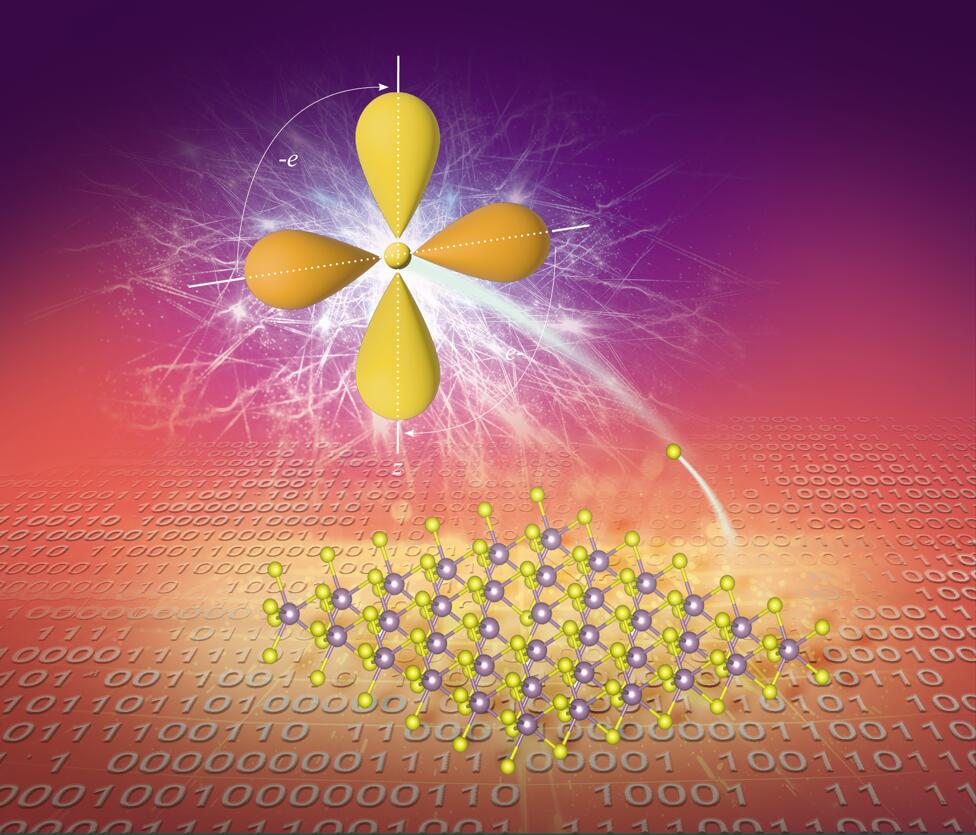SPECIAL TOPIC—Modification of material properties by defects and dopants
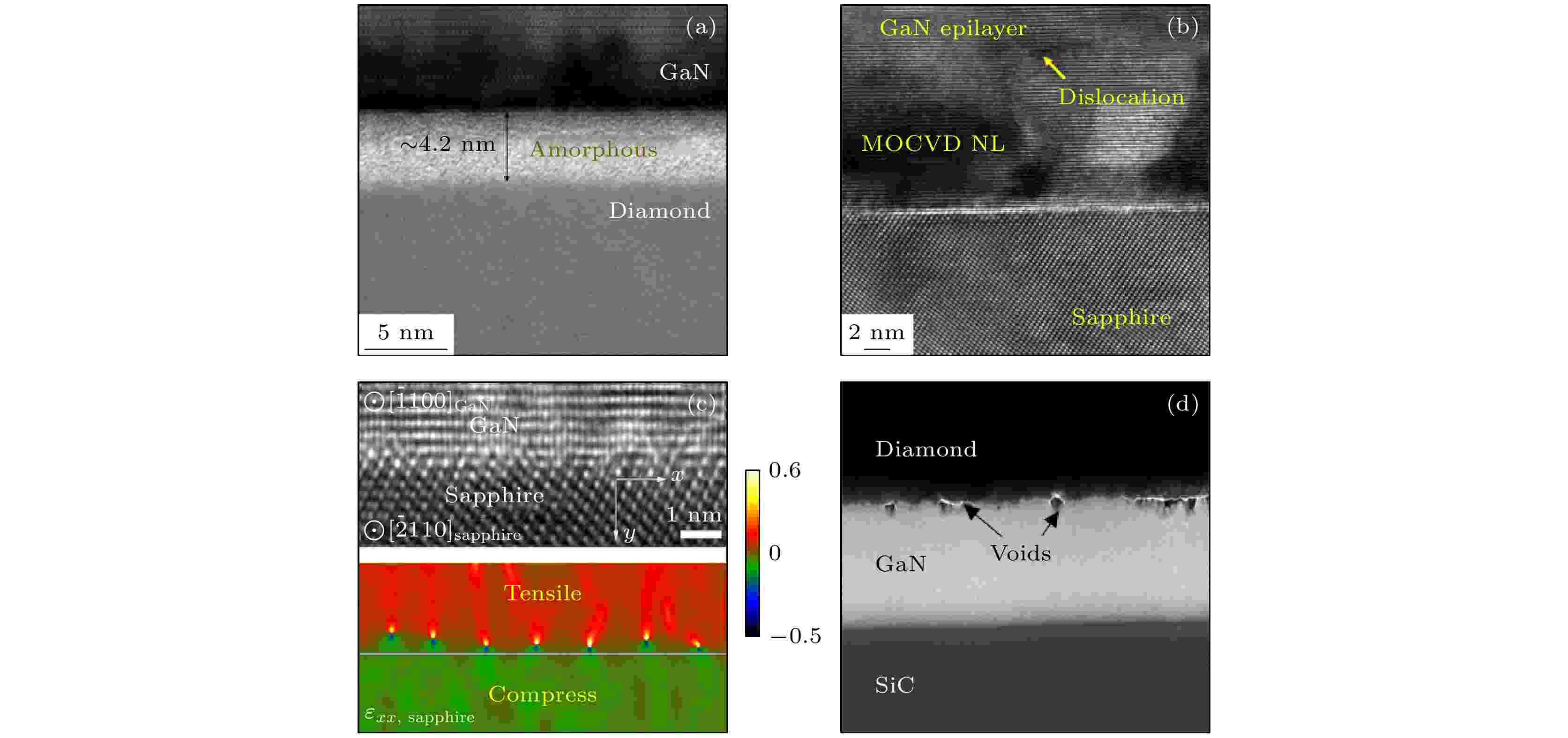
EDITOR'S SUGGESTION
2023, 72 (22): 226301.
doi: 10.7498/aps.72.20230791
Abstract +
Gallium nitride (GaN) has great potential applications in the field of high-frequency and high-power electronic devices because of its excellent material properties such as wide band gap, high electron mobility, high breakdown field strength. However, the high power GaN electronic device also exhibits significant self-heating effects in operation, such as a large amount of Joule heat localized in the thermal channel, and heat dissipation has become a bottleneck in its applications. The interface thermal conductance (ITC) between GaN and its substrate is the key to determining the thermal dissipation. In this work the various GaN interface defects and their effects on ITC are first discussed, and then some methods of studying interface thermal transport are introduced, including theoretical analysis and experimental measurements. Then, some GaN ITC optimization strategies developed in recent years are introduced through comparing the specific cases. In addition to the common chemical bond interface, the weak coupling interface by van der Waals bond is also discussed. Finally, a summary for this review is presented. We hope that this review can provide valuable reference for actually designing GaN devices.
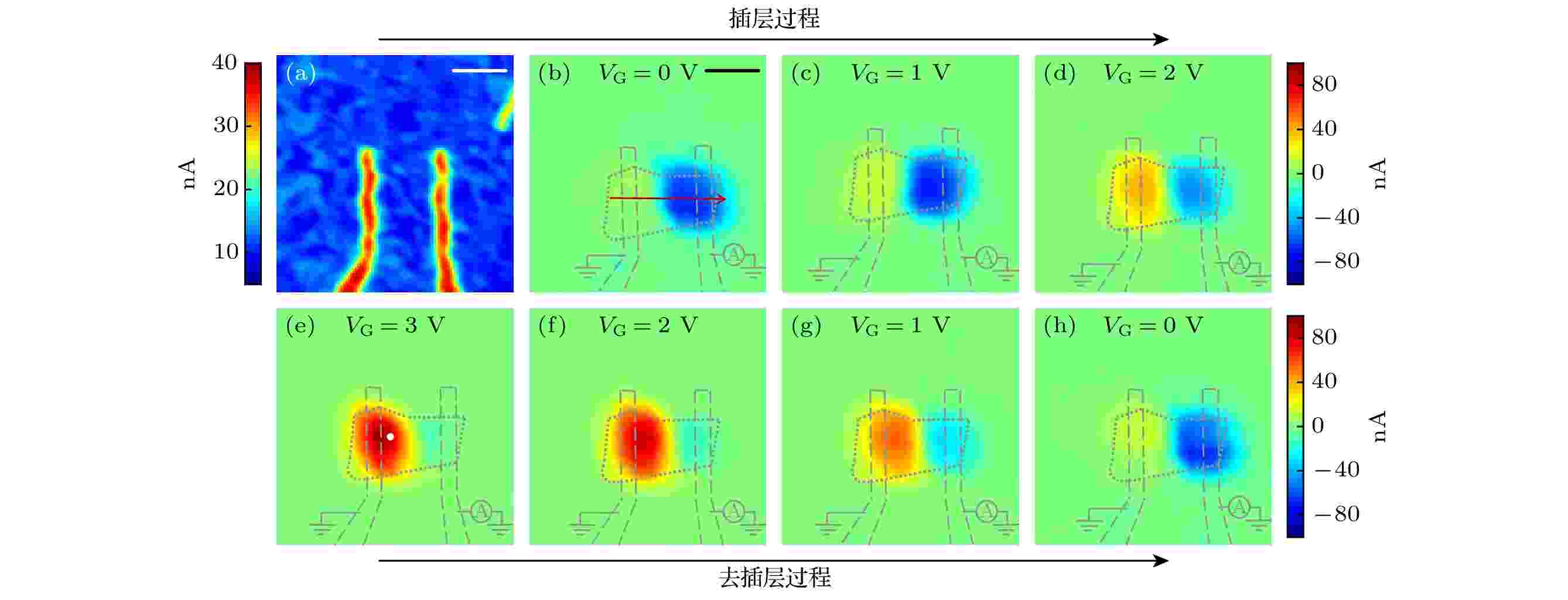
EDITOR'S SUGGESTION
2023, 72 (22): 226801.
doi: 10.7498/aps.72.20231000
Abstract +
REVIEW
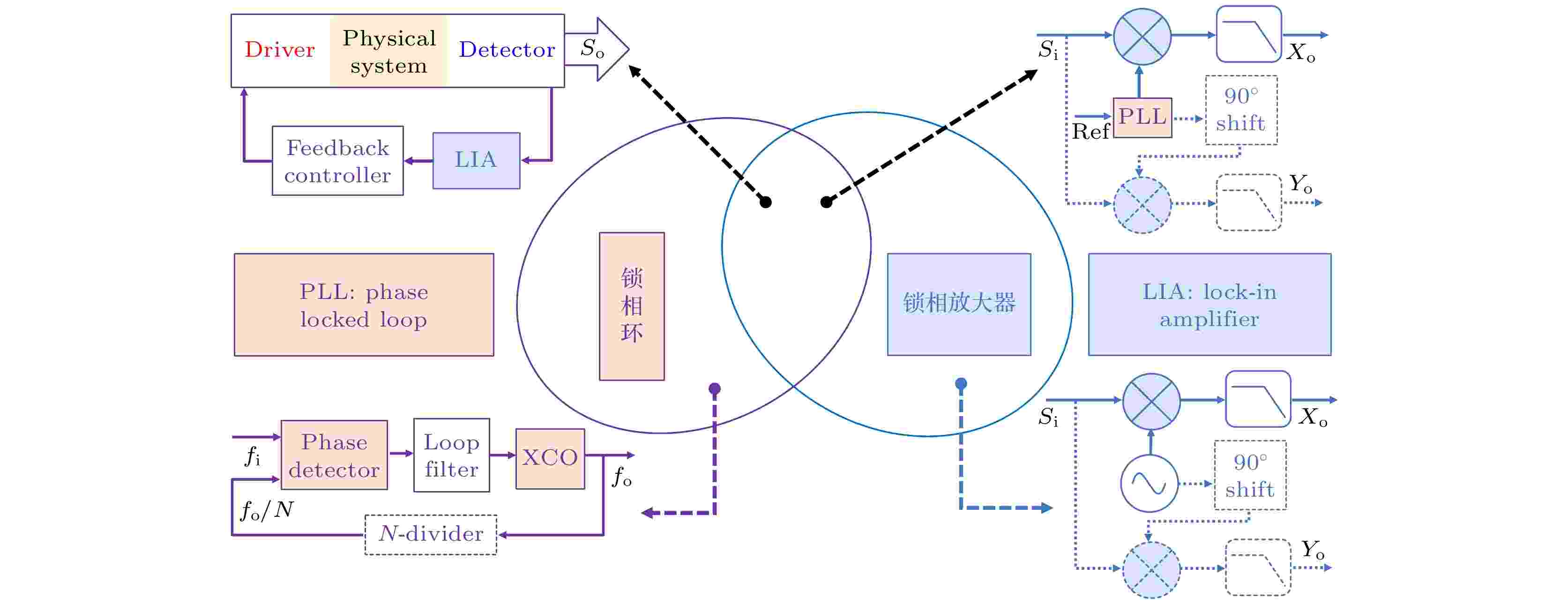
EDITOR'S SUGGESTION
2023, 72 (22): 224206.
doi: 10.7498/aps.72.20230579
Abstract +
The lock-in amplifier can perform high-precision measurement in both time and amplitude dimensions, so that it becomes a key component of instrumental system for precision measurement and control. This article overviews the concept, technology, and application of phase-locked amplifiers as a guide. It first explains the development and evolution of phase-locked amplifiers of analog, digital, and virtual phase-locked amplifiers, demonstrating their relationship and differences. Then, it classifies phase-locked amplifiers from a mathematical perspective based on the order and type of phase-locked loops. Subsequently, the testing process and metrological calibration progress of the main performance of phase-locked amplifiers, such as amplitude, frequency, and phase noise, are introduced. The conversion relationship between key indicators such as phase noise, time-domain jitter, Allan variance, and the coupling relationship with amplitude noise are discussed. Finally, the application forms and effects of phase-locked amplifiers in the fields of spectral enhancement, impedance analysis, magnetic measurement, microscopic imaging, and space exploration are listed. Through some new applications, the prospects of their transition from scientific instruments to industrial and even civilian products through intelligent computing, precise IoT, and other means are briefly given.
GENERAL
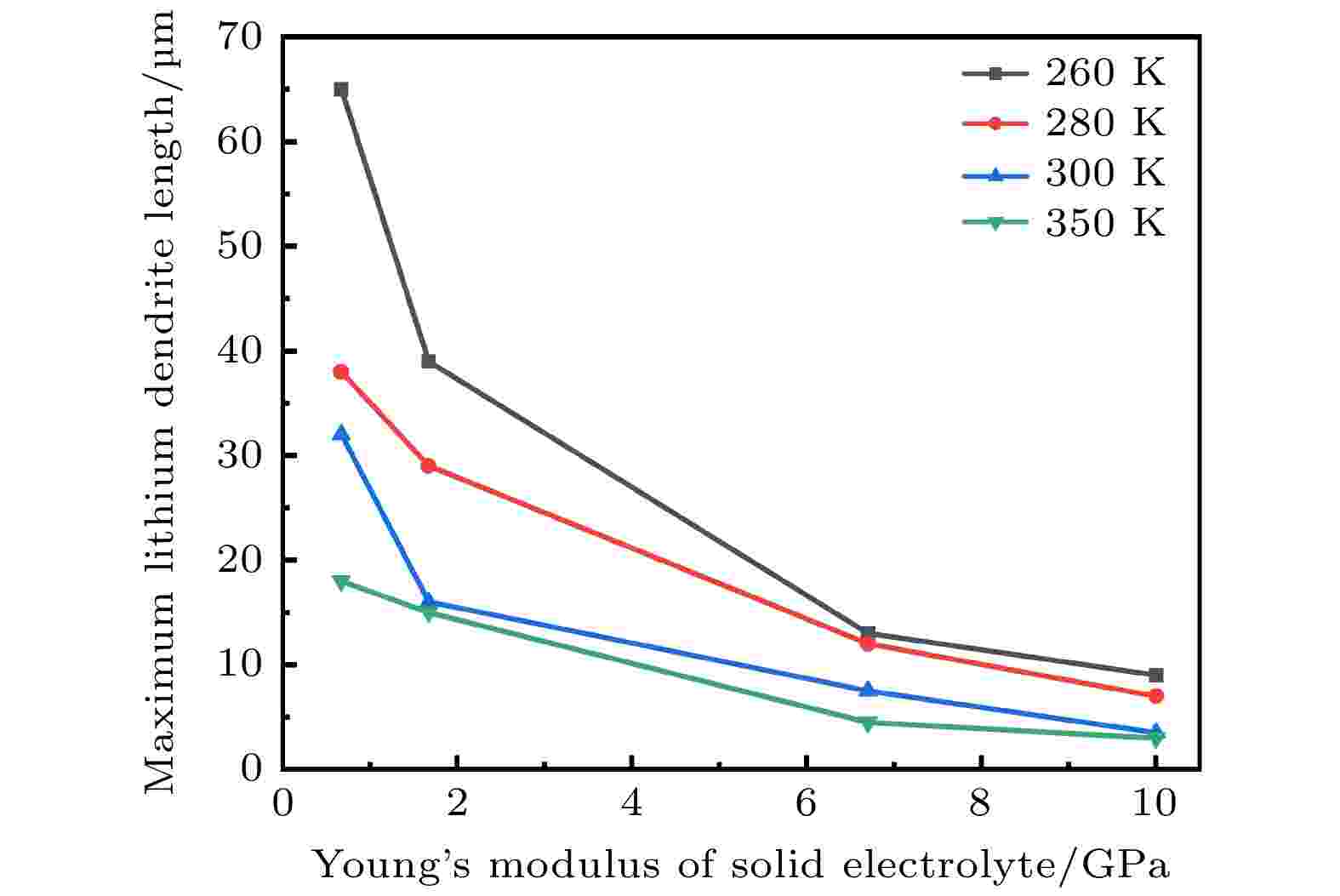
2023, 72 (22): 220201.
doi: 10.7498/aps.72.20230824
Abstract +
Growth of lithium dendrites in solid state batteries is an important factor that disturbs their commercial applications. The growth of lithium dendrites at the interface of lithium metal anode will not only lead to the decrease of battery energy efficiency, but also cause combustion, explosion and other safety problems. In order to explore the factors and methods that inhibit the growth of lithium dendrites, the phase-field theory is used to simulate the growth of lithium dendrites in polymer solid electrolyte batteries, and a phase-field model of lithium dendrite growth coupled with mechanical stress and thermal field is established. The effects of key physical factors such as ambient temperature, solid electrolyte Young’s modulus and external stress on dendrite growth and their acting principles are discussed and analyzed. The results show that under the conditions of high temperature, high solid electrolyte Young’s modulus and external stress, the growth of lithium dendrites is slow, the number of long dendrites is small, and the electrodeposition is more uniform. In addition, the effects of Young’s modulus of solid electrolyte and ambient temperature on the growth of lithium dendrites in a common range are compared with each other. It is found that the inhibition effect of changing Young’s modulus of solid electrolyte on the maximum length of lithium dendrites is 19% higher than that caused by the change of ambient temperature.
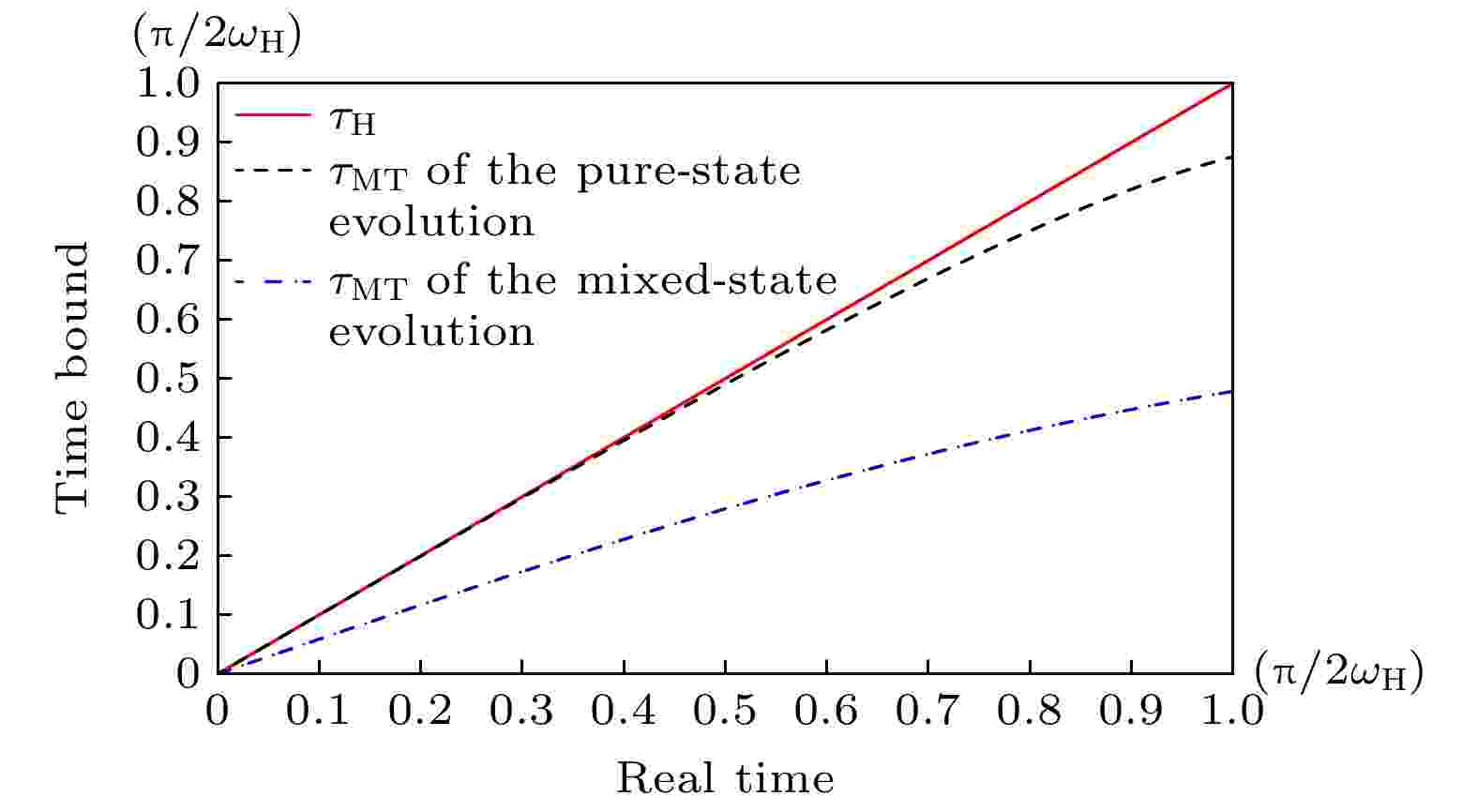
EDITOR'S SUGGESTION
2023, 72 (22): 220301.
doi: 10.7498/aps.72.20231009
Abstract +
In the issue of quantum evolution, quantum evolution speed is usually quantified by the time rate of change of state distance between the initial sate and its time evolution. In this paper, the path distance of quantum evolution is introduced to study the evolution of a quantum system, through the approach combined with basic theory of quantum evolution and the linear algebra. In a quantum unitary system, the quantum evolution operator contains the path information of the quantum evolution, where the path distance is determined by the principal argument of the eigenvalues of the unitary operator. Accordingly, the instantaneous quantum evolution speed is proportional to the distance between the maximum and minimum eigenvalues of the Hamiltonian. As one of the applications, the path distance and the instantaneous quantum evolution speed could be used to form a new lower bound of the real evolution time, which depends on the evolution operator and Hamiltonian, and is independent of the initial state. It is found that the lower bound presented here is exactly equal to the real evolution time in the range $ \left[ {0, {\pi }/({{2{\omega _{\rm{H}}}}}}) \right]$ . The tool of path distance and instantaneous quantum evolution speed introduced here provides new method for the related researches.
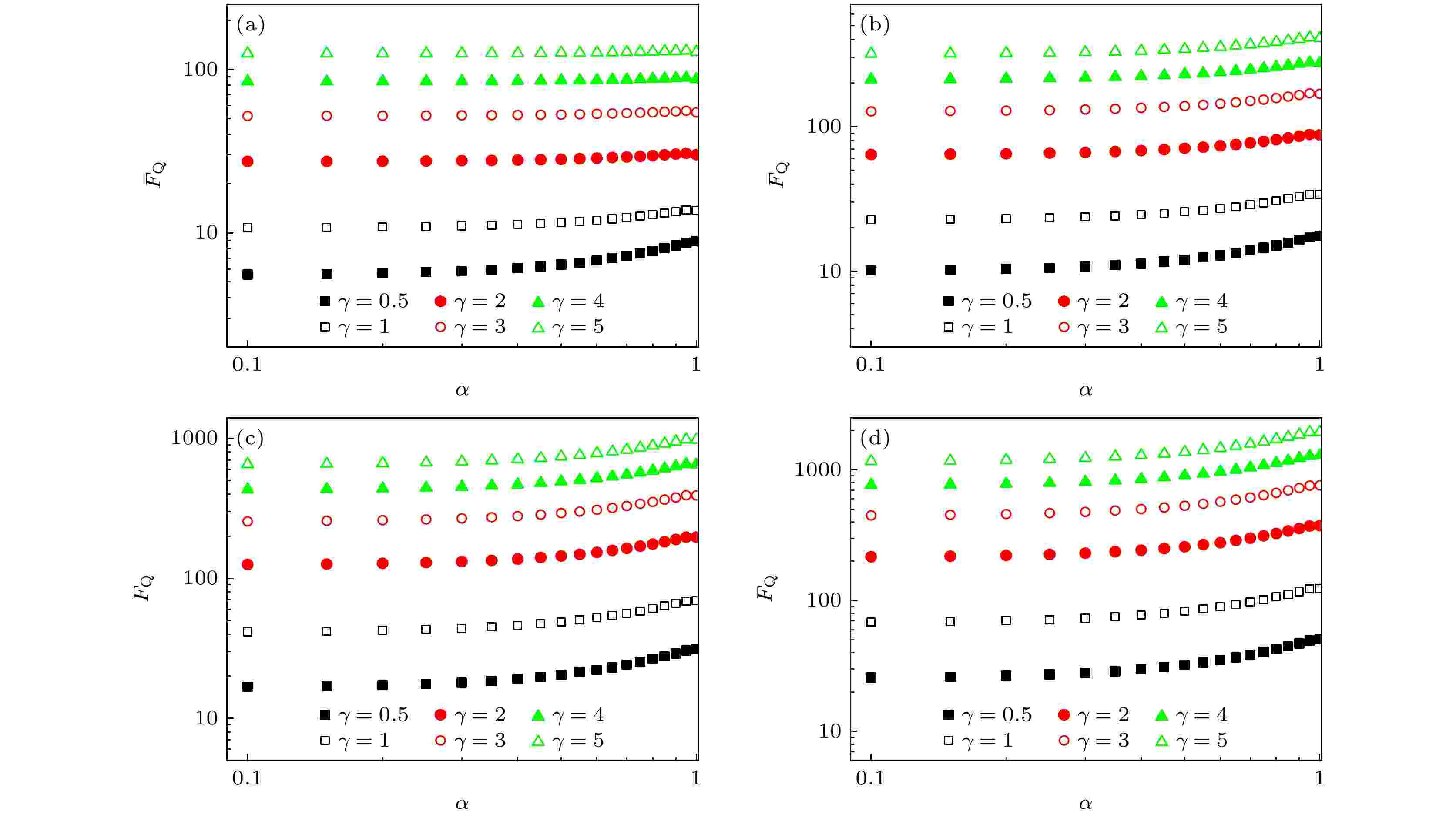
2023, 72 (22): 220302.
doi: 10.7498/aps.72.20231179
Abstract +
As an important quantity in the field of parameter estimation theory and quantum precision measurement, quantum Fisher information (QFI) can not only be used to set the theoretical limit of measurement precision in quantum system, but also be exploited to witness metrological useful quantum entanglement. Recently, it has also been broadly used in many aspects of quantum information science, including quantum metrology, multipartite entanglement structure detection, quantum phase transition, quantum chaos, quantum computation and etc. In this work, from the perspective of quantum measurement, we study the quantum Fisher information of an N-qubit WV state ($\alpha \left\vert W_N \right\rangle +\sqrt{1-\alpha^2}\left\vert 00\cdots0\right\rangle$ ) under local operation and Lipkin-Meshkov-Glick (LMG) model. Furthermore, with the general Cramér-Rao lower bound (CRLB) we analyze its performance in high-precision phase measurement. The results show that, under the local operation, the QFI of an N-qubit WV state becomes larger with the increase of parameter α. This not only means the enhanced quantum entanglement, but also implies the powerful ability in high-precision quantum measurement. In the LMG model, as the increase of interactional strength γ the QFI of $N=3$ qubits WV state gradually tends to be stable and almost not be affected by parameter α, which relaxes the requirement in the preparation of target state and indicates a great potential in achieving the relatively stable measurement precision. When the number of qubits from WV state is larger than 3, the QFI of WV state increases with the increase of parameter α. In the case of fixed parameter α, we investigate the QFI of an N-qubit WV state with respect to interaction strength γ. It is found that the QFI of WV state will increase with the increasing interaction strength, which implies that the greater the interaction strength, the stronger the quantum measurement ability of the WV state. Our work will promote the development of high-precision quantum metrology and especially the interaction-enhanced quantum measurement, and further provide new insights in quantum information processing.
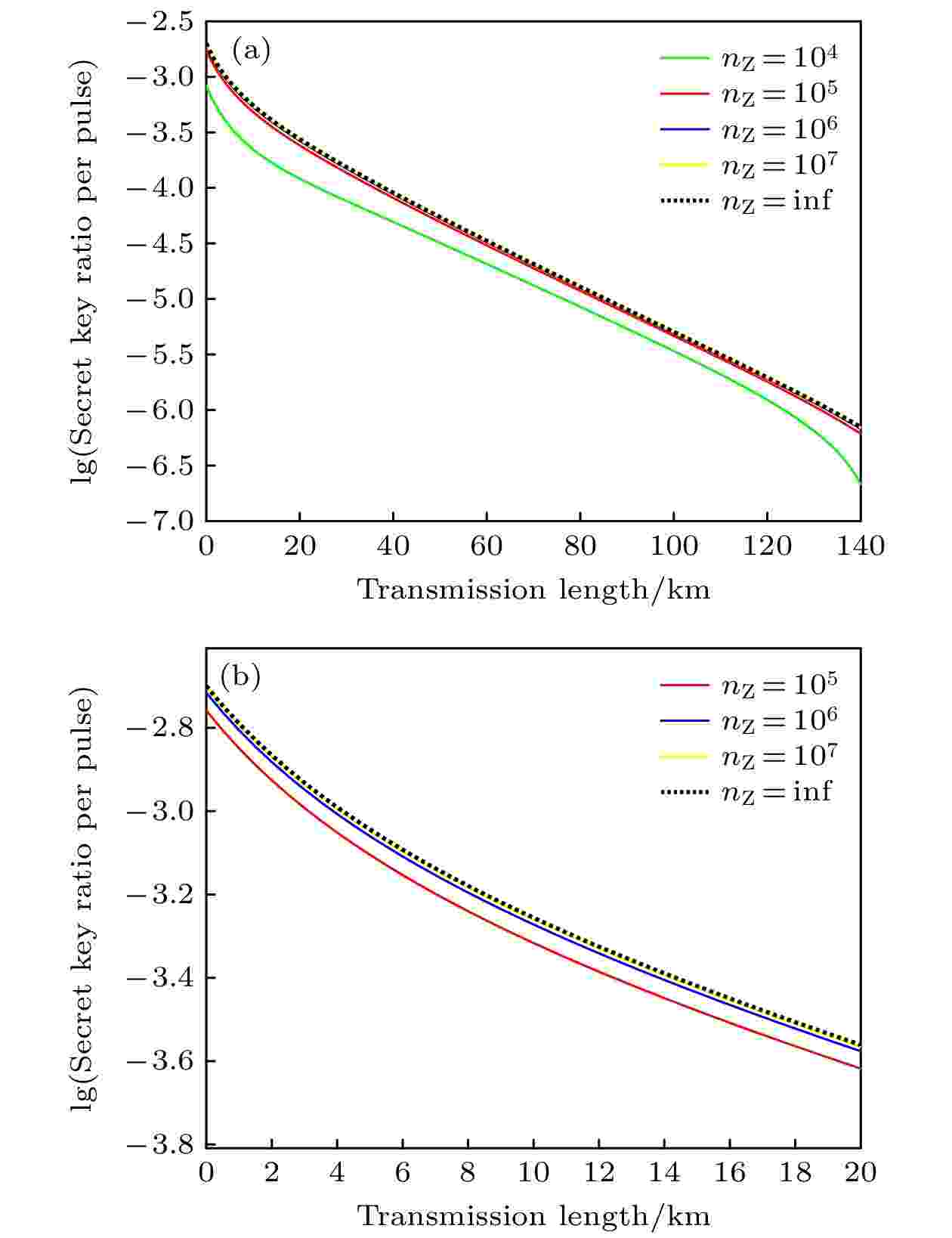
2023, 72 (22): 220303.
doi: 10.7498/aps.72.20230849
Abstract +
Semi-quantum key distribution allows a full quantum user Alice and a classical user Bob to share a pair of security keys guaranteed by physical principles. Semi-quantum key distribution is proposed while verifying its robustness. Subsequently, its unconditional security of semi-quantum key distribution system is verified theoretically. In 2021, the feasibility of semi-quantum key distribution system based on mirror protocol was verified experimentally. However, the feasibility experimental system still uses the laser pulse with strong attenuation. It has been proved in the literature that the semi-quantum key distribution system still encounters the risk of secret key leakage under photon number splitting attack. Therefore, the actual security of key distribution can be further reasonably evaluated by introducing the temptation state and conducting the finite-key analysis in the key distribution process. In this work, for the model of adding one-decoy state only to Alice at the sending based on a four state semi-quantum key distribution system, the length of the security key in the case of finite-key is analyzed by using Hoeffding inequality, and then the formula of the security key rate is obtained. It is found in the numerical simulation that when the sample size is $ {10}^{5} $ , the security key rate of $ {10}^{-4} $ , which is close to the security key rate of the asymptotic limits, can be obtained in the case of close range. It is very important for the practical application of semi-quantum key distribution system.
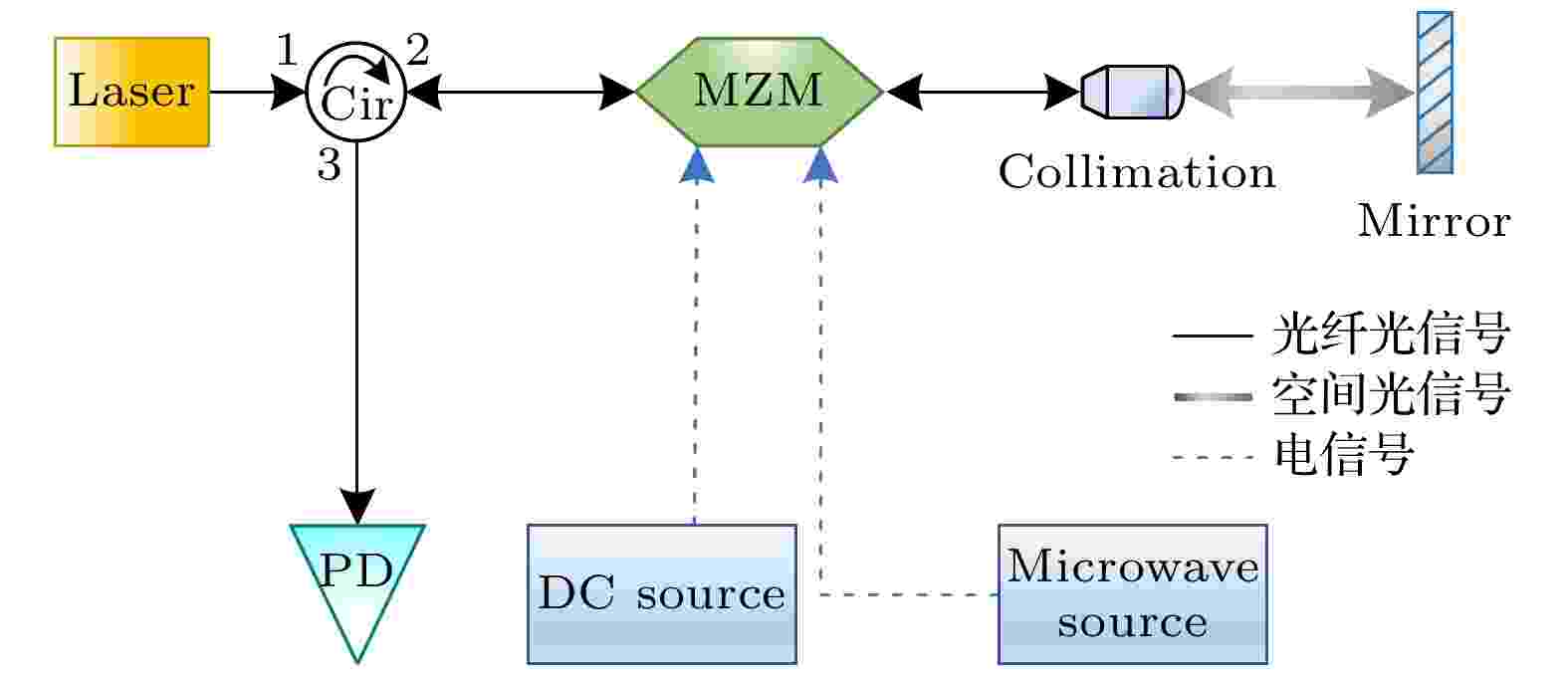
2023, 72 (22): 220601.
doi: 10.7498/aps.72.20230997
Abstract +
Long-range, high-precision, and high-refresh rate absolute distance measurement based on double intensity modulation is proposed and experimentally demonstrated. In this scheme, a Mach-Zehnder modulator is utilized to perform bidirectional modulation by a reversible optical path. In the Mach-Zehnder modulator, interference demodulation is completed by bidirectional modulated light with time difference. By adjusting the driving frequency of the modulator, the curve of light intensity versus driving frequency is achieved. Consequently, the distance to be measured can be obtained by extracted the frequency interval between two adjacent light intensity minimum points. In the traditional double polarization modulation ranging, the optical carrier is polarized by a polarizing beam splitter (PBS) before phase modulator. Moreover, a quarter wave or Faraday rotating mirror need to be placed to adjust the polarization in front of the target object. Therefore, the polarization state is an indispensable factor in the traditional double polarization modulation ranging. Due to the advantage of the intensity modulation, absolute distance measurement is achieved without additional polarization control, greatly simplifying the system. Theoretical analysis of the system is developed, which is then demonstrated by experiments. In the experiments, we achieved the following results. Firstly, the relationship between the intensity of the output light of the system and the modulation frequency is theoretically analyzed, which proved to be a cosine form. Secondly, swing method is introduced to realize high-speed absolute distance measurement during the analytical distance algorithm, and we achieved a refresh rate of 2 kHz in the experiments. Thirdly, the relationship between measurement ranging precision and frequency stability is analyzed. When the modulation frequency is 8.9 GHz, the experimentally measured frequency stability is on the order of 10–7. And when the distance to be measured is 2.73 m, the standard deviation of ranging reaches 1 μm, which represents the precision of the system. That is, the relative measurement precision is also on the order of 10–7, which is consistent with theoretical analysis. Finally, when the distance to be measured increases from 1.57 m to 100.83 m, the measurement precision increases from 1 μm to 30 μm. It is worth mentioning that the relative measurement precision of the system is always stable in the order of 10–7. Our scheme has some significant advantages, such as long-range, high-precision, high-refresh rate, and a simple and compact configuration. Moreover, our method can be used in important applications such as precision instruments, metrology, and aerospace.
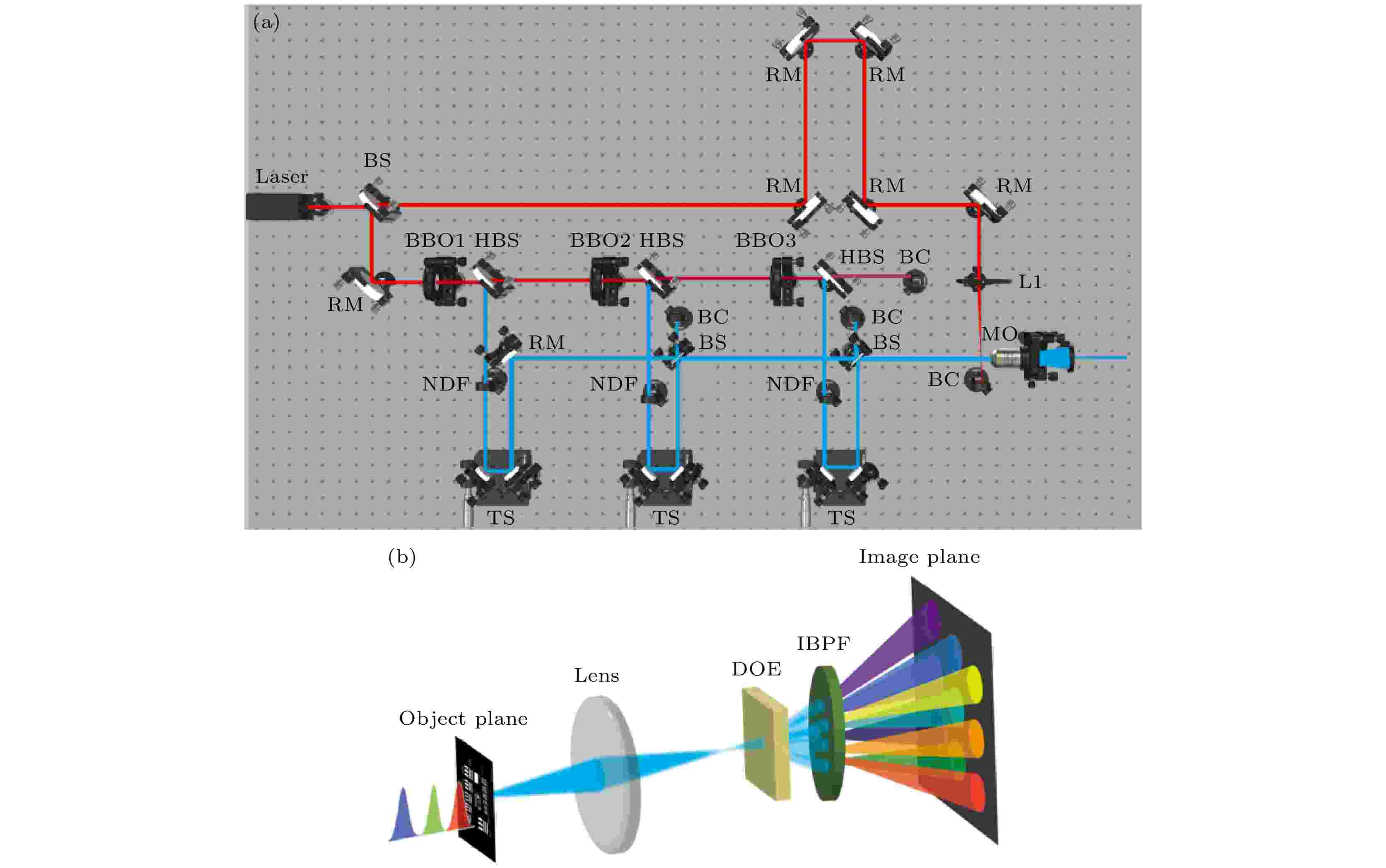
EDITOR'S SUGGESTION
2023, 72 (22): 220602.
doi: 10.7498/aps.72.20230727
Abstract +
The laser probe is one of the main techniques for capturing ultrafast dynamic processes and has extensive applications in fields such as plasma physics, photochemistry, and biomedical science. In this work, a time-wavelength encoded optical probe generation scheme is proposed, which uses cascaded frequency doubling crystals with different phase-matching angles and independent delay lines to achieve time-wavelength encoding. This method offers single-shot high-spatiotemporal resolution, high frame rate, and a wide range of adjustable time windows. The temporal resolution of the optical probe depends on the pulse width of the second harmonic, which can be adjusted by changing the phase-matching angle of the frequency-doubling crystal. The time window of the optical probe is only related to the change in the delay line, which can be adjusted by changing the length of the delay line. Therefore, the time resolution and time window of the optical probe are independent of each other. An optical probe generation system is constructed with 247 fs temporal resolution, 4 μm spatial resolution, 4.05 THz maximal frame rate, and an adjustable time window from sub-picosecond to 3 ns. The three-dimensional spatiotemporal evolution process of plasma filaments is captured within a single shot by using the optical probe. The experimental results show that the ionization front of the plasma propagates forward at a velocity of $ {\left(2.963\pm 0.024\right)\times 10}^{8}\;{\rm{m}}/{\rm{s}} $ , which is consistent with the theoretical prediction. This demonstrates the feasibility of using the probe for capturing ultrafast events. In the part of discussion, we analyze that the key parameters of the optical probe can reach a maximum frame rate of 35.7 THz, a maximum time resolution of 28 fs, and a time window range that can be adjusted from hundreds of femtoseconds to tens of nanoseconds. Finally, the optimal design parameters of the optical probe are given for different application scenarios. The optical probe generation scheme has good scalability and versatility, and can be combined with any wavelength decoding device, diffraction imaging, holographic imaging, tomography scanning, and other technologies. The high spatiotemporal resolution of the optical probe and the independent adjustability of its parameters provide a feasible solution for single-shot high spatiotemporal resolution captures of ultrafast dynamic processes on a multiple time scale.
SPECIAL TOPIC—Modification of material properties by defects and dopants • COVER ARTICLE
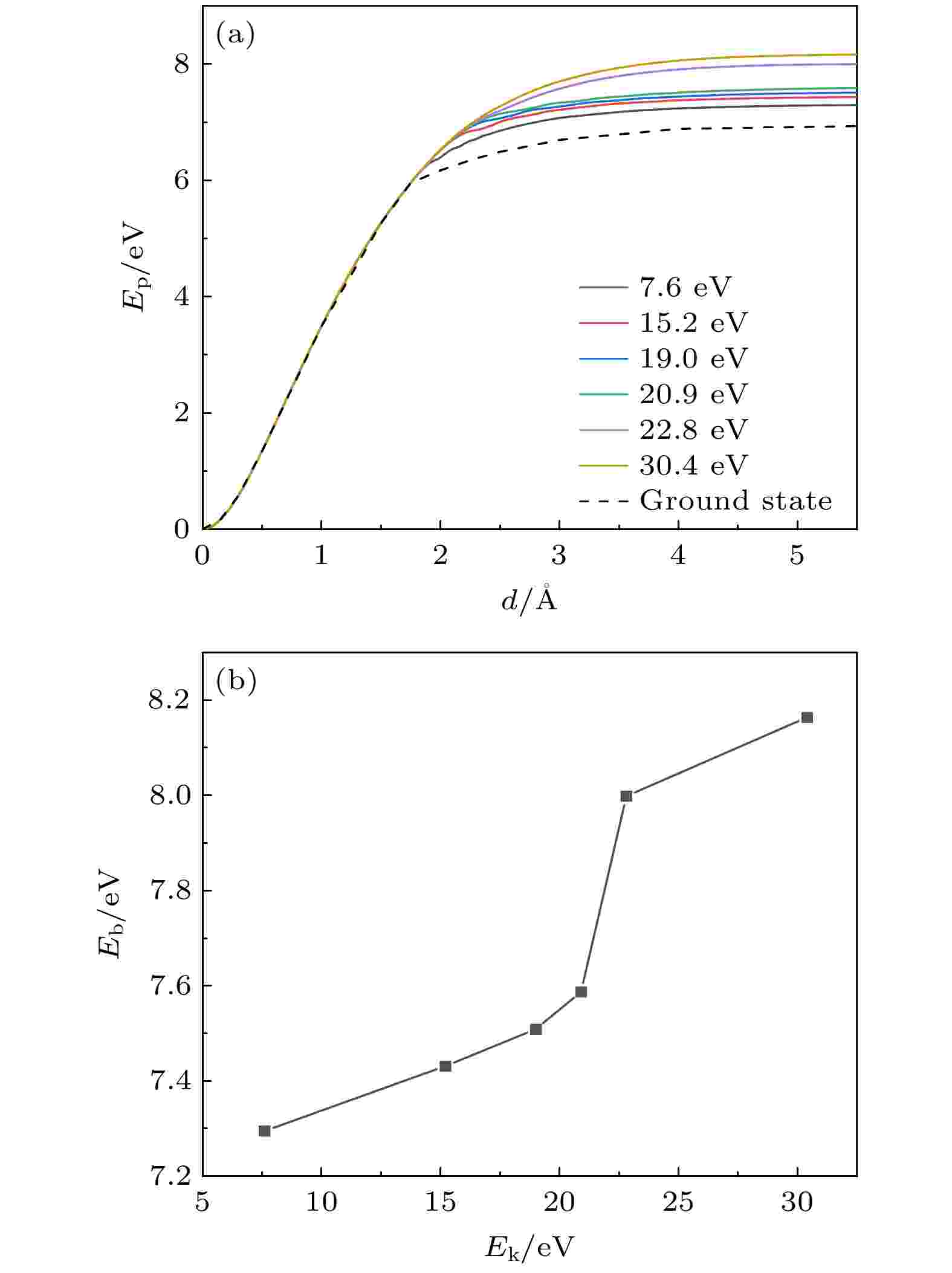
COVER ARTICLE
2023, 72 (22): 226101.
doi: 10.7498/aps.72.20230787
Abstract +
NUCLEAR PHYSICS
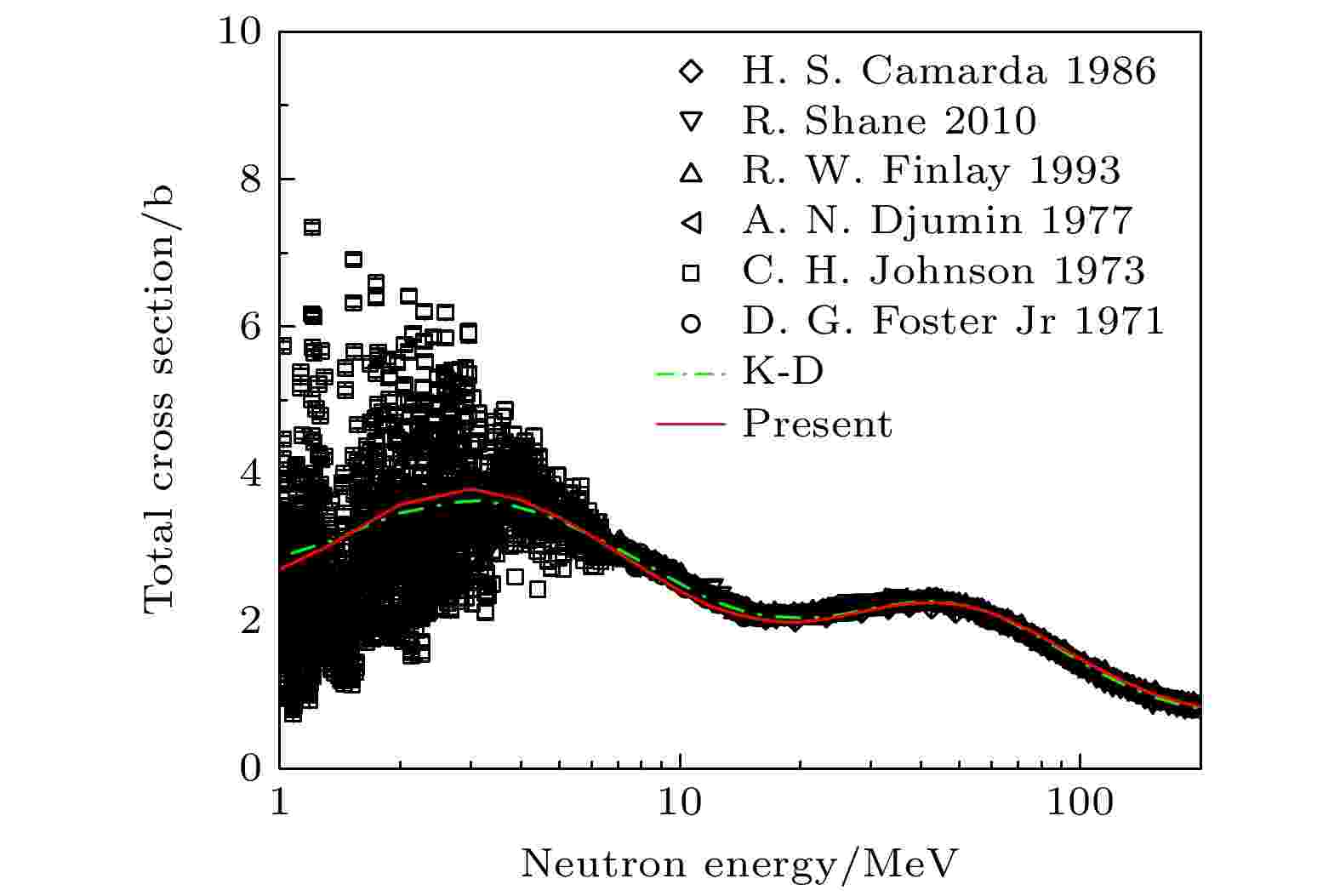
2023, 72 (22): 222401.
doi: 10.7498/aps.72.20231054
Abstract +
Spherical nucleus 40Ca is important structural and alloy material nucleus. Based on important theoretical value and application prospect of nuclear data of calcium isotopes, nucleon-nucleus scattering data on 40Ca nucleus, the main isotopes of natural calcium, are calculated by using dispersive optical model (DOM). The dispersive optical model potential is defined by energy-dependent real potentials, imaginary potentials, and also by the corresponding dispersive contributions to the real potential which are calculated analytically from the corresponding imaginary potentials by using a dispersion relation that follow from the requirement of causality. By fit simultaneously scattering experimental data for neutron and proton, an isospin-dependent dispersive optical model potential containing a dispersive term is derived. This derived potential in this work considers the nonlocality in the real “Hartree-Fock” potential $ V_{\rm{HF}} $ and introduces the shell gap in the definition of nuclear imaginary volume, surface and spin-orbit potentials near the Fermi energy. This dispersive optical model potential shows a good description of nucleon-nucleus scattering data on 40Ca nucleus up to 200 MeV including neutron total cross sections, neutron elastic scattering angular distributions, proton elastic scattering angular distributions, neutron analyzing powers and proton analyzing powers. In addition, the energy dependencies of calculated real volume integrals of dispersive optical model potential is shown, and a typical dispersive hump is seen around the Fermi energy. This dispersive hump behavior naturally obtained from dispersion relations, and allows the dispersion optical potential to get rid of energy dependent geometry, thus avoiding the use of a radius dependent on energy.
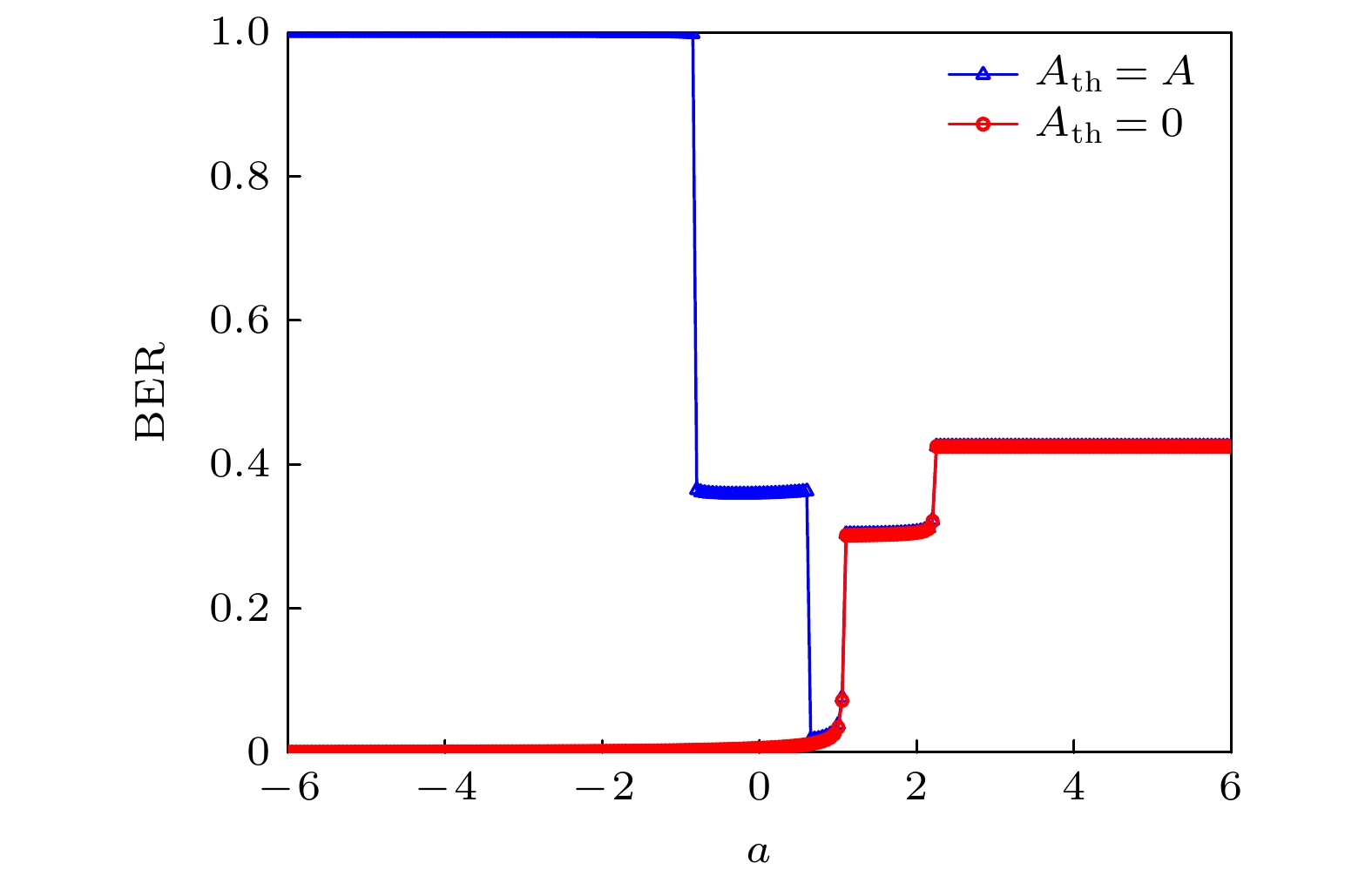
2023, 72 (22): 222501.
doi: 10.7498/aps.72.20231154
Abstract +
The aperiodic resonance of a typical nonlinear system that excited by a single aperiodic binary or M-ary signal and its measuring method are studied. The focus is on exploring aperiodic resonance caused by the system parameter. A response amplitude gain index suitable for aperiodic excitation is proposed to measure the effect of aperiodic resonance, and the research is carried out by combining the cross-correlation coefficient index and bit error rate index. The results show that the cross-correlation coefficient can better describe the synchronization and waveform similarity between the system output and the input aperiodic signal, but cannot describe the situation whether the signal is amplified after passing through the nonlinear system. The response amplitude gain can better describe the amplification of signal amplitude after passing through the nonlinear system, but cannot reflect the synchronization and waveform similarity between the system output and the input aperiodic signal. The aperiodic resonance occurs at the valley corresponding to the cross-correlation coefficient and the peak corresponding the response amplitude gain. The aperiodic resonance locations reflected on both the cross-correlation coefficient and the response amplitude gain curves are the same. The bit error rate can describe the synchronization between the system output and the input signal at appropriate thresholds, as well as the degree to which the aperiodic signal is amplified after passing through the nonlinear system. The bit error rate curve can directly indicate the resonance region of the aperiodic resonance. The aperiodic resonance can occur in a nonlinear system excited by a single aperiodic binary or M-ary signal, and its aperiodic resonance effect needs to be measured by combining the cross-correlation coefficient, response amplitude gain, bit error rate and other indices together.
ATOMIC AND MOLECULAR PHYSICS
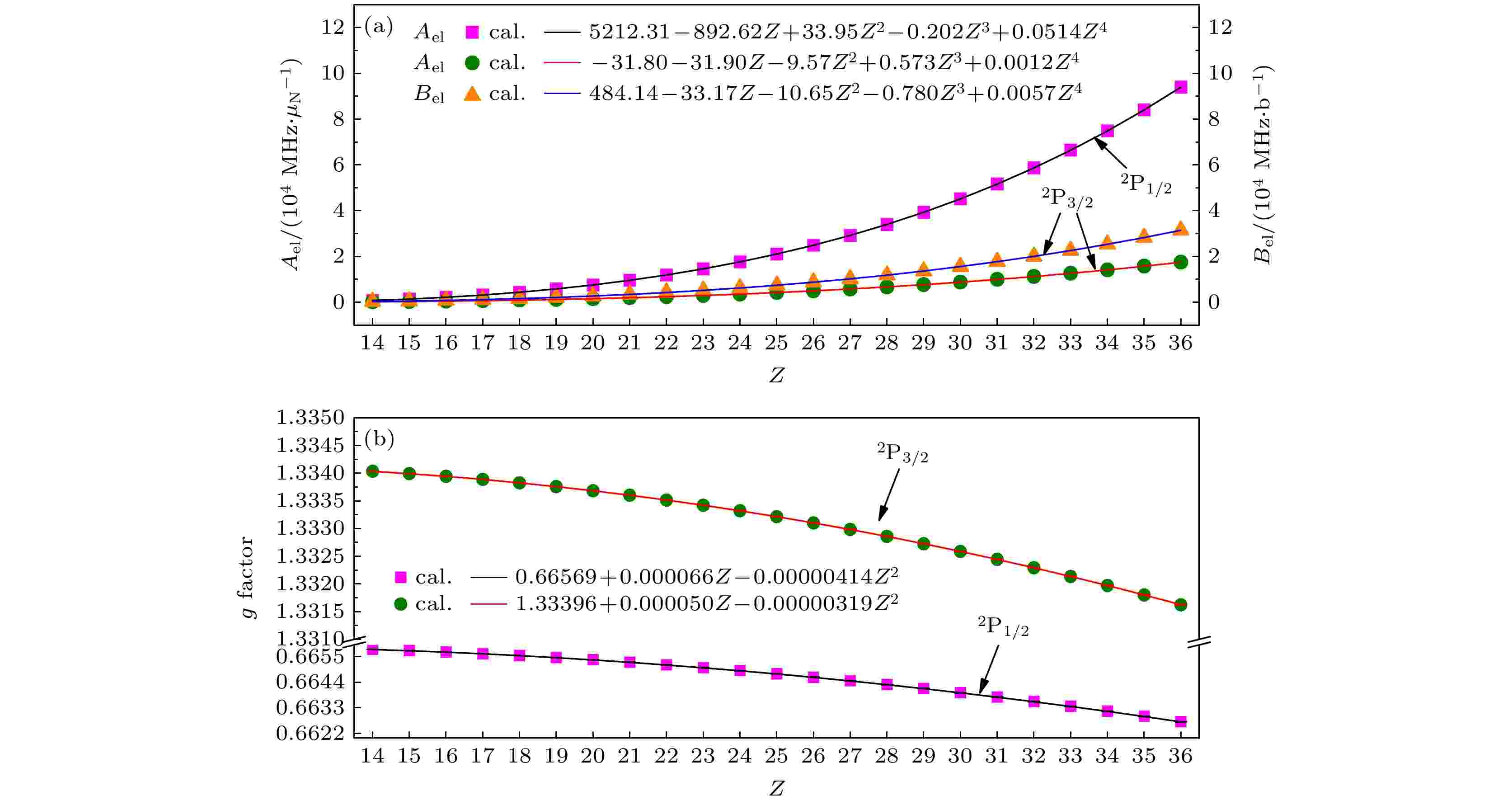
EDITOR'S SUGGESTION
2023, 72 (22): 223101.
doi: 10.7498/aps.72.20230940
Abstract +
The highly charged Al-like ions are the potential candidates for the next-generation atomic optical clocks, and their atomic parameters are also useful in plasma and nuclear physics. In the present work, the hyperfine interaction constants and Landé g factors of 3s23p 2P1/2, 3/2 states in the ground configuration for Al-like ions in a range between Si+ and Kr23+ ions are calculated by using the multi-configuration Dirac-Hartree-Fock method. Owing to the fact that hyperfine interaction constant is sensitive to electron correlation effects, we systematically investigate its influence on the hyperfine interaction constants, particularly for the high-order correlation related to the 2p electrons. According to this investigation and by taking into account the Breit interaction and QED corrections, we achieve the computational accuracy at a level of 1% and 10–5 for the hyperfine interaction constants and Landé g factors, respectively, except for the Si+ ion. Furthermore, the electronic parts of hyperfine interaction constants and g factors are fitted with functions of atomic number. The deviations between these fitted formulas and the ab initio calculations are less than 2% and 10–5 for the hyperfine interaction constants and the g factors, respectively. As a result, the hyperfine interaction constants and g factors of all isotopes can be determined for Al-like ions with 14 ≤ Z ≤ 54.
ELECTROMAGNETISM, OPTICS, ACOUSTICS, HEAT TRANSFER, CLASSICAL MECHANICS, AND FLUID DYNAMICS
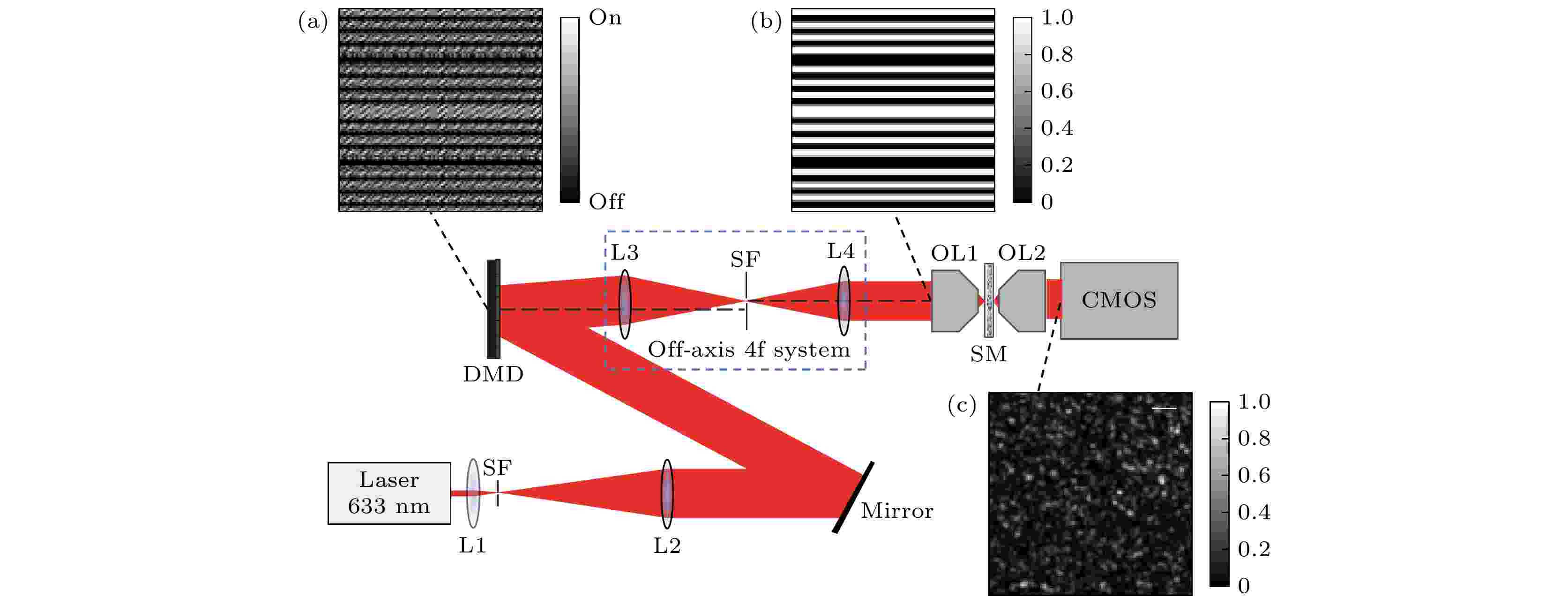
2023, 72 (22): 224201.
doi: 10.7498/aps.72.20230660
Abstract +
When light propagates through complex medium, such as biological tissue and multimode fiber, refractive index inhomogeneity causes multiple scattering and distortion. This phenomenon is usually seen as obstacles for biomedical imaging, telecommunications, photodynamic therapy and so on. Thus, manipulation of the incident wavefront to compensate for the wavefront distortion due to multiple scattering has been an interdisciplinary subject of interest. Fortunately, wavefront shaping technologies have emerged to provide versatile solutions to minimize the influence of light scattering. By modulating the incident light into a special wavefront with a spatial light modulator, focusing through scattering medium is obtained. To date, several wavefront shaping techniques have been proposed, mainly including transmission matrix inversion, feedback based iterative optimization, and digital optical phase conjugation. Unlike a planar wavefront, the modulated light with special wavefront is transformed into a bright optical focus spot or a desired focus pattern after the scattering medium. Among the proposed approaches, the transmission matrix is considered as a significant tool to characterize a multiple scattering medium with the purpose of manipulating light propagation through it, which contains all the information related to the input field and the scattered output field. In this work, we experimentally measure the transmission matrix of scattering media based on self-reference interference method with a digital micromirror device. Unlike the conventional setup, which divides the incident wavefront into a signal part and reference part, in the self-reference interference method, the reference light is superimposed directly on the signal light to form a new set of input light fields. This self-reference interference method effectively improves the degree of freedom of optical field modulation. Moreover, the intensity ratio between the signal light and the reference light can be adjusted conveniently. In our experiment, this superimposed field is generated by a digital micromirror device with superpixel method. We measure the Hadamard basis and the OAM-basis transmission matrices of scattering medium, respectively. With the measured transmission matrices, single-spot, multi-spot and vortex focusing are achieved after scattering medium, verifying the accuracy of the measured transmission matrices. The strong diagonal presented in the norm of focusing operator also proves the accuracy of the measured transmission matrices. The proposed method may have potential applications in optical imaging and optical communication under scattering environment.
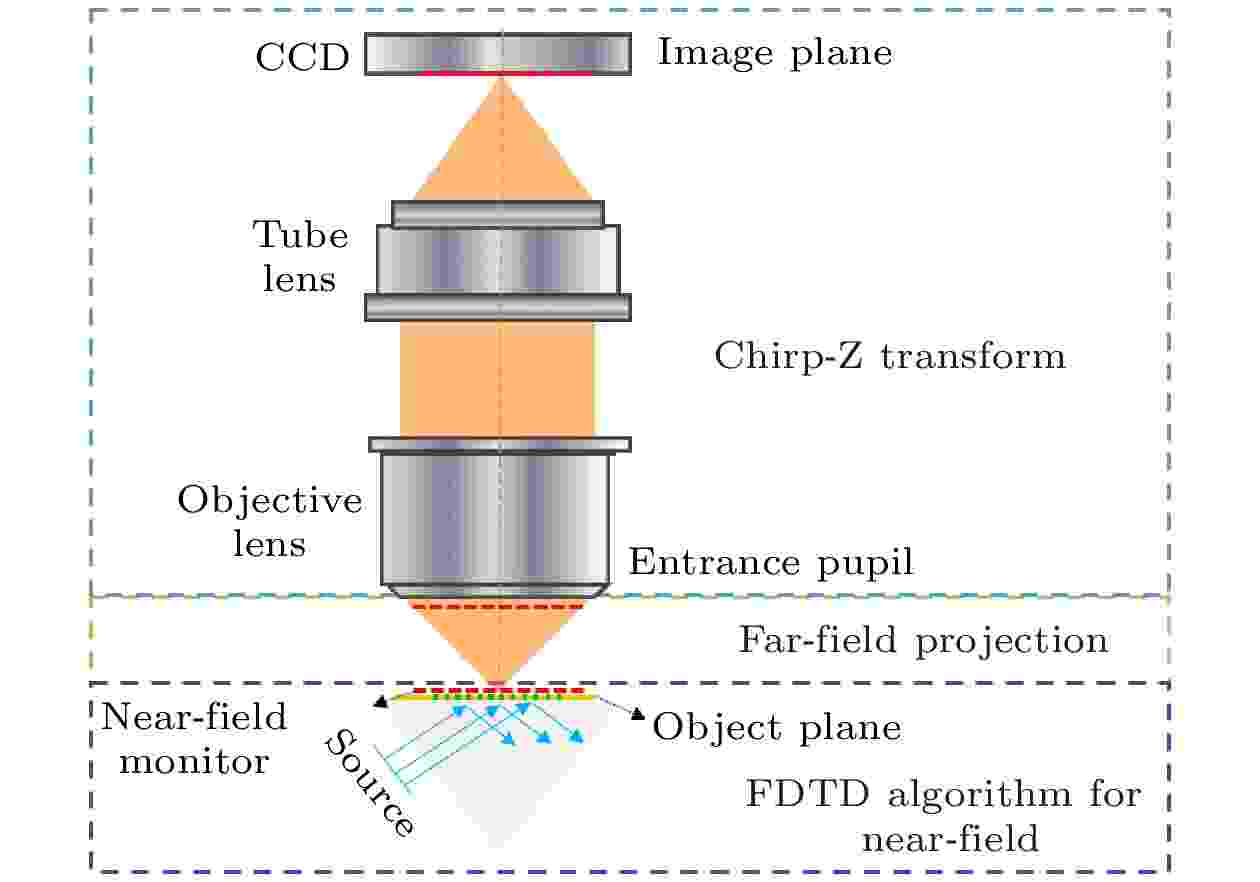
2023, 72 (22): 224202.
doi: 10.7498/aps.72.20230934
Abstract +

2023, 72 (22): 224203.
doi: 10.7498/aps.72.20231035
Abstract +
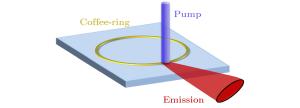
2023, 72 (22): 224204.
doi: 10.7498/aps.72.20231457
Abstract +
The development of colloidal near-infrared quantum dot (QD) lasers has been hindered by the high state degeneracy of lead salt QDs and the difficulty in coupling colloidal QDs to the resonant cavity. In this study, we show that the above challenges can be addressed by the self-assembly laser based on Ag2Se QDs. The Ag2Se QDs with the lowest quantized states 2-fold degeneracy are used to replace lead salt quantum dots to achieve low threshold near-infrared optical gain. We employ the finite element method to in depth analyze the mode field distribution and oscillation mechanism of the coffee-ring microcavity. Our results reveal that the light field oscillates in a zig-zag path along the cross-sectional area, indicating strong coupling between the QDs and the cavity mode. Furthermore, we investigate the relationship of cavity length with free spectrum range and laser emission wavelength. Using this relationship and the gain spectrum characteristics of Ag2Se QDs, we design a single-mode near-infrared laser and conduct a comprehensive analysis. The simulation results are used to fabricate a single-mode near-infrared Ag2Se QD coffee-ring microlaser, which exhibits a linewidth of 0.3 nm and a threshold of 158 μJ/cm2. Currently, it holds the record for the lowest laser threshold among near-infrared colloidal QD lasers. The increasing of the laser cavity length leads the emission wavelength to increase from 1300 nm to 1323 nm. In addition, the toxicity of Ag2Se QD is remarkably negligible. Our work promotes the development of environment-friendly near-infrared lasers toward practical lasers.
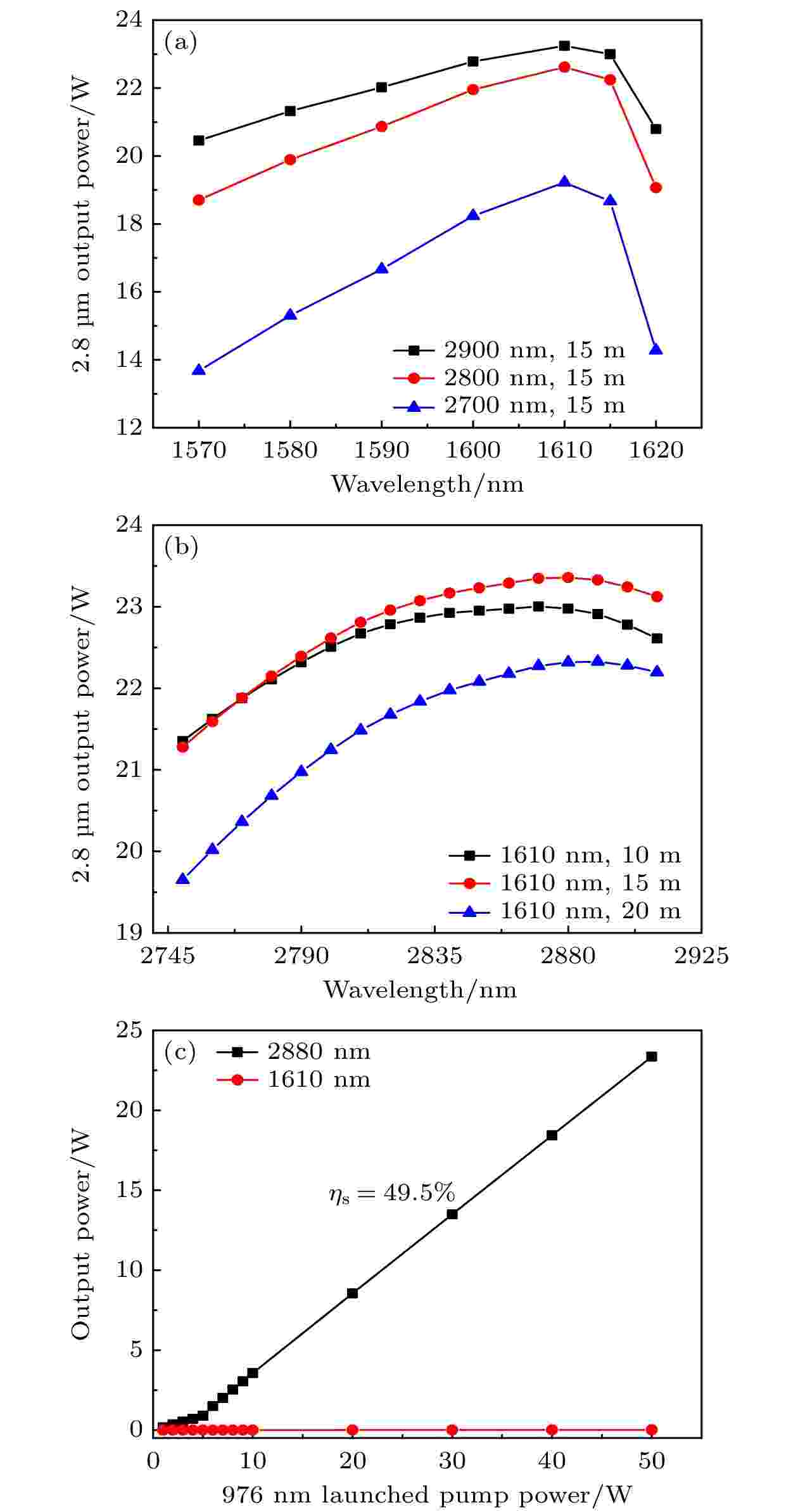
2023, 72 (22): 224205.
doi: 10.7498/aps.72.20230903
Abstract +
Er3+-doped ZBLAN fiber laser is a promising approach to producing 2.8 μm mid-infrared (MIR) laser. The long lifetime of the lower-laser-level 4I13/2 often results in serious self-terminating effect which harms the laser power and efficiency significantly, especially for the active fiber with low dopant concentration which is preferred for weak thermal issues but cannot depopulate the lower-laser-level effectively via the up-conversion process. The 1.6 μm lasing (4I13/2 → 4I15/2) in Er-ZBLAN fiber could deplete the population on 4I13/2. Therefore, cascaded 2.8 μm and 1.6 μm lasing in Er3+-doped ZBLAN fiber provides a promising solution to the self-termination effects on laser power scaling. Moreover, the 4I13/2 → 4I15/2 1.6 μm laser also has some overlap with the 4I13/2 → 4I9/2 excited state absorption (ESA) spectrum. The ions on the 4I9/2 level would then relax to the upper-laser-level of 2.8 μm lasing (4I11/2), and results in enhanced laser efficiency. In general, the 1.6 μm cascaded lasing in 2.8 μm Er-ZBLAN fiber laser involves both lasing and ESA. The two processes have different spectra and different influences on the 2.8 μm laser gain. Therefore, there should exist an optimal wavelength of the 1.6 μm laser, which would balance the two processes, ensuring the lower-laser-level depopulation while maximizing the ion recycling. Therefore, we develop a comprehensive numerical model of cascaded 2.8 μm and 1.6 μm lasers based on Er-ZBLAN fiber. After the numerical model is verified by the previous experimental results, the effects of MIR and 1.6 μm lasing wavelengths on the power and conversion efficiency of 2.8 μm laser are investigated in depth. The results show that a suitable trade-off between the two processes can be reached with the cascaded lasing wavelength of 1610 nm, for the optimized 2.8 μm laser power/efficiency. Moreover, the influence of 1.6 μm laser cavity feedback on the power/efficiency characteristics of the 2.8 μm laser is also investigated. It is found that the feedback at 1.6 μm is very low, even only 4% is provided by the Fresnel reflection of the fiber facet, which can effectively generate 1.6 μm laser and significantly improve the efficiency of 2.8 μm laser.
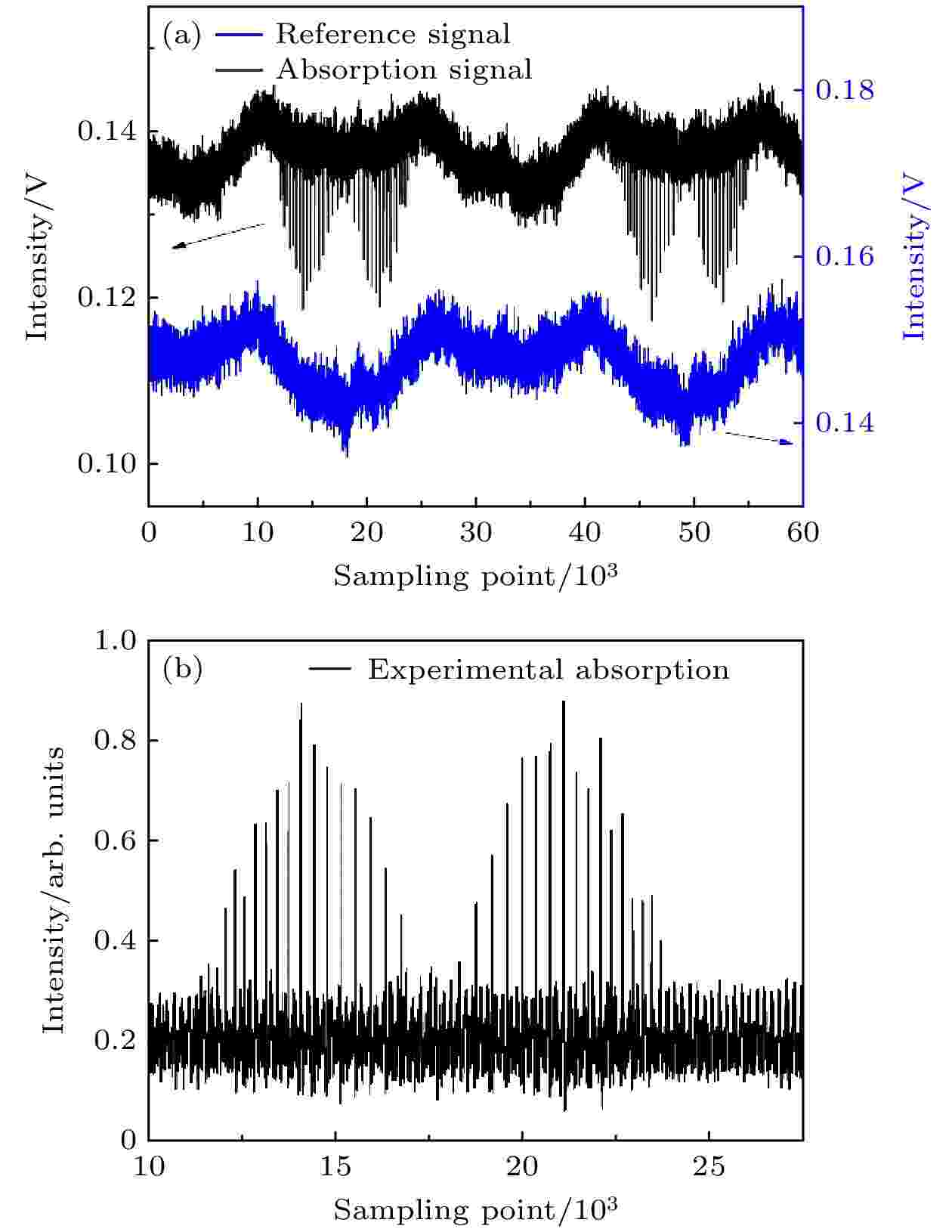
2023, 72 (22): 224207.
doi: 10.7498/aps.72.20230557
Abstract +
As an important medial product in the combustion process of carbon-based compounds, CO serves as one of the preferable candidates for combustion diagnosis in absorption spectrum. So far, most of researches have focused on the conventional one-line or dual-line technique, which requires a number of beam projections for two-dimension (2D) tomography of combustion field. Hyperspectral absorption spectroscopy enables continuous acquisition of absorption information over a whole absorption band, rather than one or two discrete absorption lines, demonstrating remarkable advantage over the traditional one-line and dual-line techniques. Hyperspectral absorption spectroscopy can not only reduce the system complexity with limited projections for high spatial resolution 2D tomography, but also improve the system applicability by refining the measurement robustness. However, up to now, little attention has been paid to hyperspectral absorption of CO. Here, by using a wideband tunable laser source around 1.5 μm, experiments are conducted at room temperature to investigate the hyperspectral absorption characteristics of CO in the near infrared band. Absorptions under different pressure conditions are compared with each other. And, the measured results are consistent with the HITRAN2016 database. With the measured hyperspectral absorption information in the 1565–1570 nm range, temperature and mole fraction of CO are derived by the first derivative method. Despite the distortion of the recorded absorption peaks, accurate results are obtained with measurement errors within 5% for both temperature and mole fraction, thereby validating the reliability of hyperspectral absorption technique for CO. And, this research is instructive for future 2D tomography of combustion fields based on hyperspectral absorption of CO.
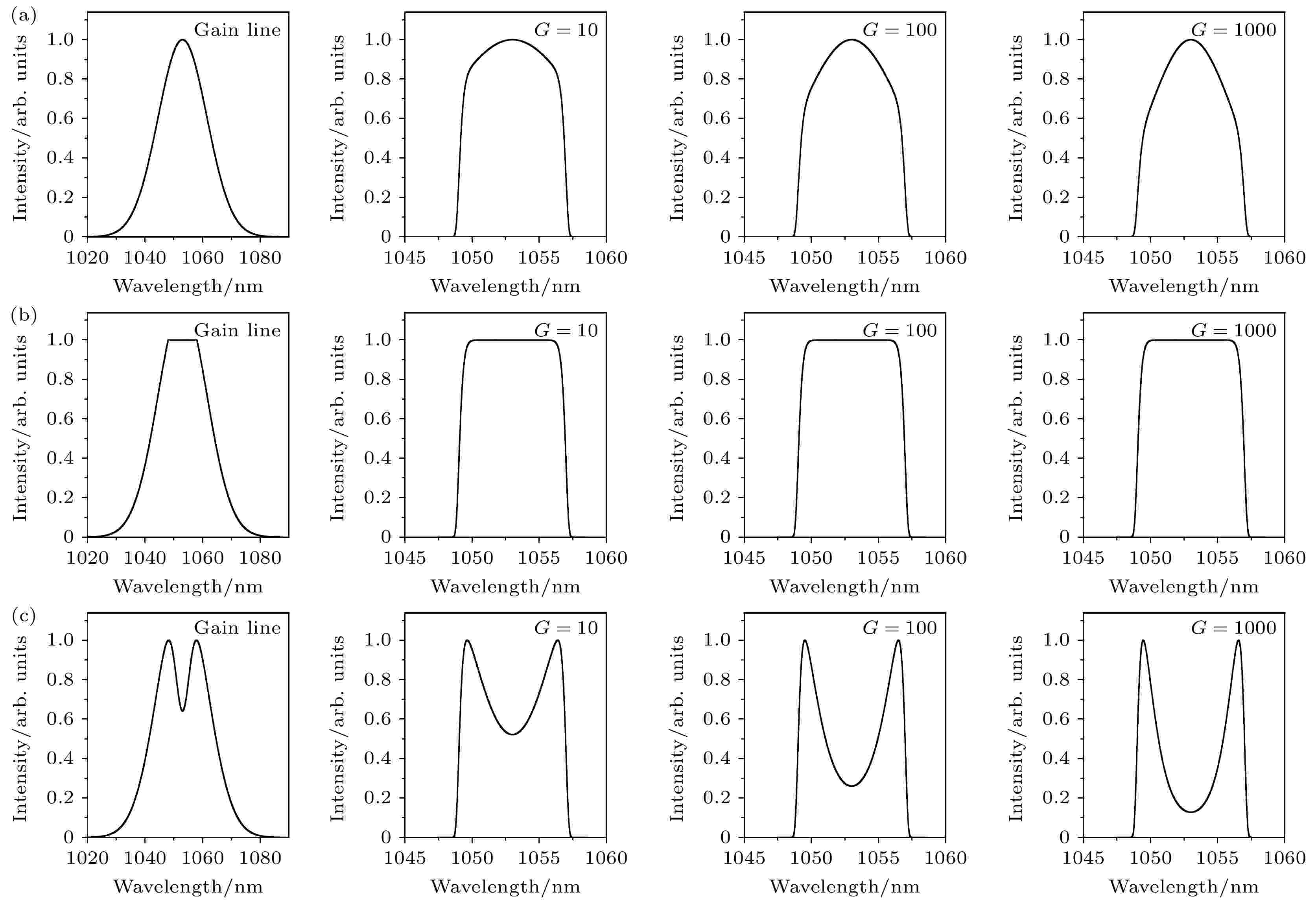
2023, 72 (22): 224208.
doi: 10.7498/aps.72.20230972
Abstract +
Spectral gain narrowing is one of the key factors affecting broadband amplification of ultrashort pulses. In this paper, the spectral gain characteristics in broadband amplification are studied theoretically and experimentally by using the characteristic of Nd,Gd:SrF2 crystal, i.e. the emission spectrum that has a certain width at the higher stimulated emission cross section. Through the numerical simulation, the evolution law of output spectrum of the laser gain medium under different spectral gain lineshapes and different gain values is studied in detail. Theoretical calculation shows that the spectral gain is narrowed obviously with the increase of gain value of the traditional Gaussian emission spectrum, and that increasing the spectral bandwidth at the maximum stimulated emission cross section can obviously suppress the spectral gain narrowing. Furthermore, the spectral gain narrowing characteristics of the Nd,Gd:SrF2 crystal are studied experimentally. The Ф 13 mm× 150 mm Nd,Gd:SrF2 crystals are used as the gain medium which are pumped by flash lamps in the experimental study. The experimental results show that the output spectra of Nd,Gd:SrF2 crystals are not obviously narrowed when the full width at half maximum (FWHM) of spectral width of the input laser is 5 nm and the gain is 140 times. The experimental results are consistent with the theoretical calculation and analysis. The crystal can work normally at a repetition rate of 0.2 Hz and 1.0 Hz in the experiment, but due to the influence of thermal effect, the gain will decrease to a certain extent with the increase of pump energy and repetition rate. The research results lay the foundation for the application of fluoride crystal in broadband chirped pulse amplification.

EDITOR'S SUGGESTION
2023, 72 (22): 224209.
doi: 10.7498/aps.72.20230877
Abstract +
Deep ultraviolet (DUV) femtosecond laser, which combines the advantages of high single-photon energy of DUV laser with high peak power of femtosecond laser, is widely used in scientific research, biomedicine, material processing and so on. However, in the process of generating DUV femtosecond laser based on nonlinear frequency conversion is encountered a problem that the group velocity mismatch caused by dispersion makes the temporal walk-off of the nonlinear frequency conversion larger than the pulse duration of the femtosecond laser, thus making the generation of the DUV femtosecond laser very difficult. In this work, based on a Yb-doped fiber femtosecond laser, the delay line is optimized to precisely compensate for the spatial and temporal walk-off, so DUV femtosecond laser possesses the following performances: the center wavelength is 206 nm, the repetition rate is 1 MHz, the maximum output power is 102 mW, the maximum conversion efficiency is 4.25% from near infrared to DUV, the root mean square (RMS) power stability is 0.88% within 3 h, and the peak-to-peak power stability is 3.75%. The evolution of laser spectra and beam quality in the process of second harmonic generation (SHG), fourth harmonic generation (FHG) and sum-frequency generation (SFG) are also systematically studied. The experimental results provide a basis for generating DUV femtosecond laser from femtosecond fiber lasers.
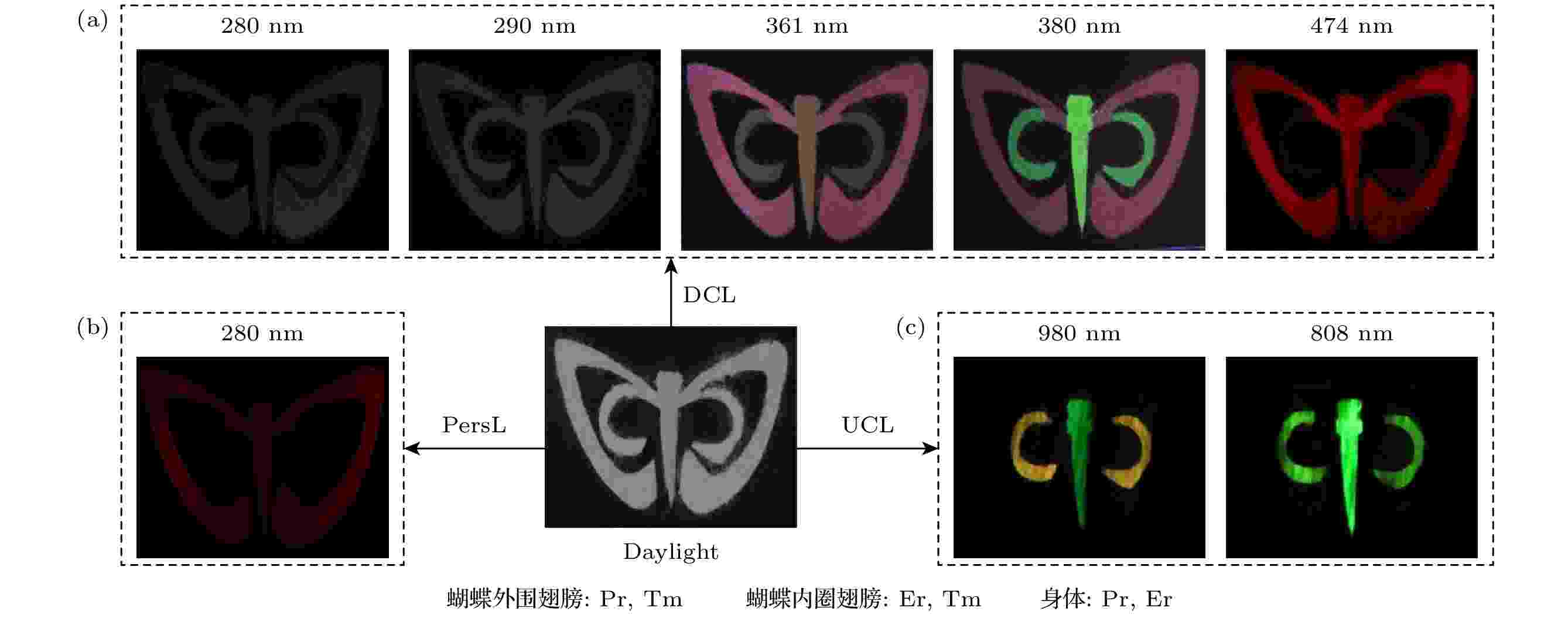
2023, 72 (22): 224210.
doi: 10.7498/aps.72.20230517
Abstract +
Multicolor and multimode luminescence materials have important applications in the field of information security encryption. However, the design and synthesis of multicolor multimode luminescent materials is still a challenge, and only several materials have been reported. In this paper, a series of single doped and double doped Li1–xKxNbO3:Pr3+/Er3+/Tm3+ phosphors are prepared by high temperature solid state method. The structure, morphology, optical properties and thermoluminescence (TL) spectra are characterized by X-ray diffractometer (XRD), scanning electron microscope (SEM), luminescence spectrometer and self-made heating device. Firstly, the effects of different values of K+ content on the luminescence and trap distribution of LiNbO3 materials are studied. The results show that the ionic lattice is distorted when a small quantity of K+ ions replace Li+. With the addition of K+, the photoluminescence excitation (PLE) spectra monitored emission of 620 nm shows that the ratios of the absorption peaks from matrix (200–310 nm) to absorption peaks from the intrinsic transition of Pr3+ ions 4f→5d (310–430 nm) change significantly, showing a double-peak characteristic. When the concentration of K+ ions is 0.5, the absorption peak from the matrix disappears, which may be due to the phase transition of the matrix lattice caused by excessive K+ ions or the introduction of a large number of defect energy levels into the matrix lattice. Moreover, K+ ion doping can regulate the density and distribution of traps. TL curves show that a small quantity of K+ doping increases the trap density of shallow traps. When a large quantity of K+ is doped, the phase changes of matrix lattice and the defect density decrease. Secondly, the doping of Li0.9K0.1NbO3 matrix by different luminescent centers (Pr3+/Er3+/Tm3+) is studied. The results show that the multicolor luminescence emission in red, blue and green bands and the tunable multimode luminescence (up/down conversion luminescence, afterglow luminescence and photo-stimulated luminescence) are realized by the selective excitation. According to the multicolor and multimode characteristics of the phosphors, a butterfly-shaped anti-counterfeiting pattern is designed. Owing to the different energy level positions of the luminescence centers, dynamic multicolor photoluminescence is realized by selective excitation at different wavelengths. Based on the upconversion luminescence characteristics of Er3+ and the excellent afterglow characteristics of Pr3+ in Li0.9K0.1NbO3 material, the designed anti-counterfeiting pattern shows the dynamic color change and multicolor, multimode high-order anti-counterfeiting application.
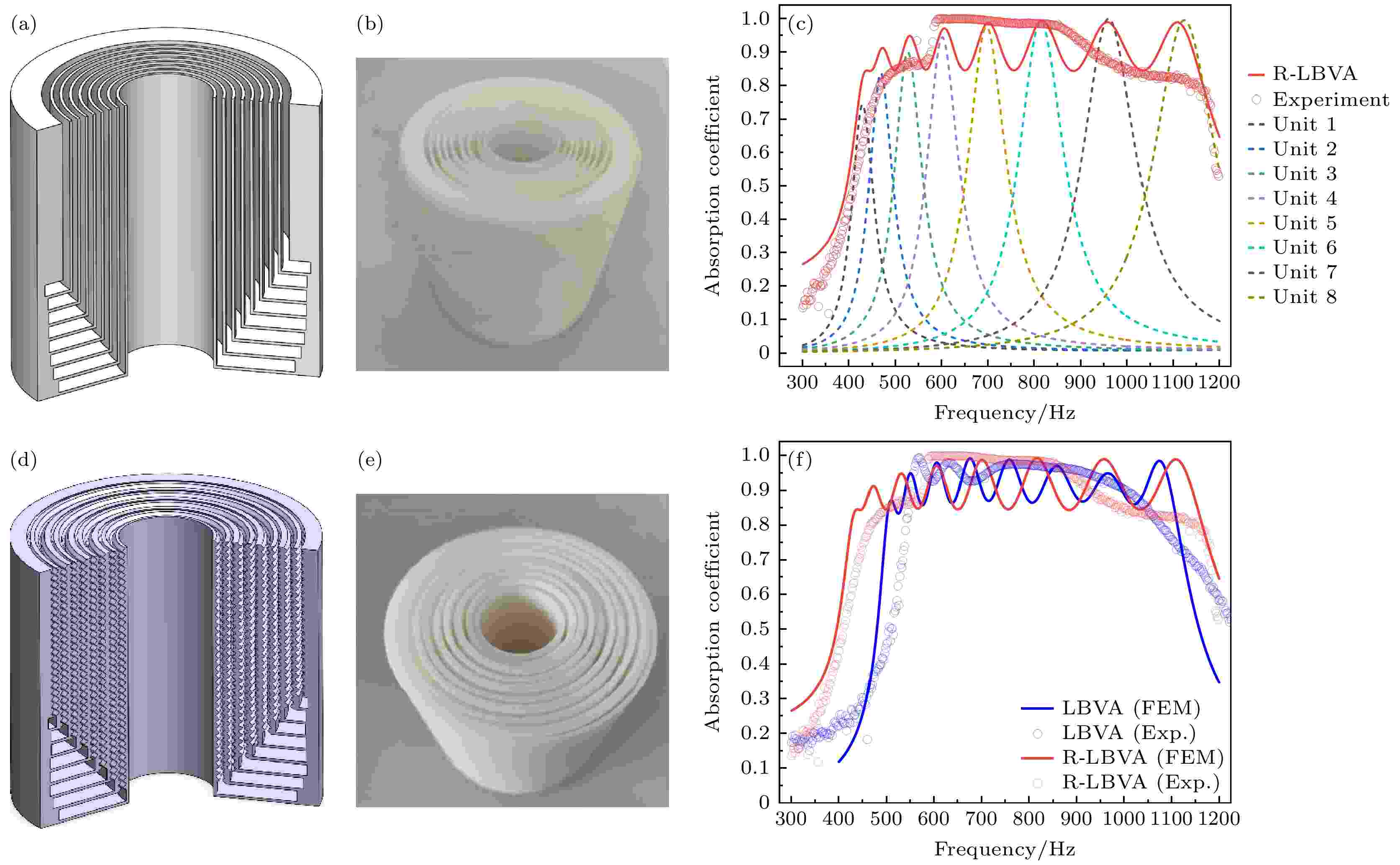
2023, 72 (22): 224301.
doi: 10.7498/aps.72.20231047
Abstract +
Aiming at the unsatisfactory low-frequency sound absorption effect of Helmholtz resonator, a novel broadband low-frequency ventilation absorber with rough neck is proposed. The roughness is introduced into the neck of Helmholtz resonator to change the shape of the neck and achieve the structure of rough neck Helmholtz resonator. The proposed absorber can effectively provide the acoustic impedance required for low-frequency sound absorption without changing the overall size, thereby reducing the resonant frequency. The finite element method is used to simulate the structure, and the impedance tube sound absorption test is carried out to verify it. The experimental and simulation results show high consistency with each other. The results also indicate that the rough neck Helmholtz resonator absorber with roughness introduced in the neck achieves an absorption peak at 58 Hz, with an absorption coefficient of about 0.63. Comparing with the absorber without roughness introduced, the resonant peak frequency becomes low, from 70 Hz to 58 Hz, reducing 17.1%. Therefore, adjusting the neck roughness can serve as a method of tuning the acoustic performance, and the absorption peak frequency can be adjusted by appropriately increasing the neck roughness so as to move it in the low frequency direction. Based on the verification that the roughness of the neck can effectively reduce the absorption peak frequency of Helmholtz resonator, a broadband low-frequency ventilation absorber with a rough neck, which is composed of eight absorption units, is designed. Through simulation calculation and experimental exploration, the absorption coefficient can achieve more than 0.8 in a target working frequency band of 500-1100 Hz. On this basis, the acoustic impedance of the structure can be adjusted by introducing roughness into the neck of Helmholtz resonator, so as to obtain the optimized broadband low-frequency ventilation absorber with a rough neck, which achieves a broadband sound absorption coefficient higher than 0.8 in a frequency range of 400–1200 Hz. The optimized structure also has 8 consecutive absorption peaks with amplitudes above 0.95. The proposed low-frequency broadband ventilation absorber provides a reference for designing and optimizing efficient low-frequency subwavelength acoustic absorbers. It has a wide range of applications in pipeline noise control.
PHYSICS OF GASES, PLASMAS, AND ELECTRIC DISCHARGES
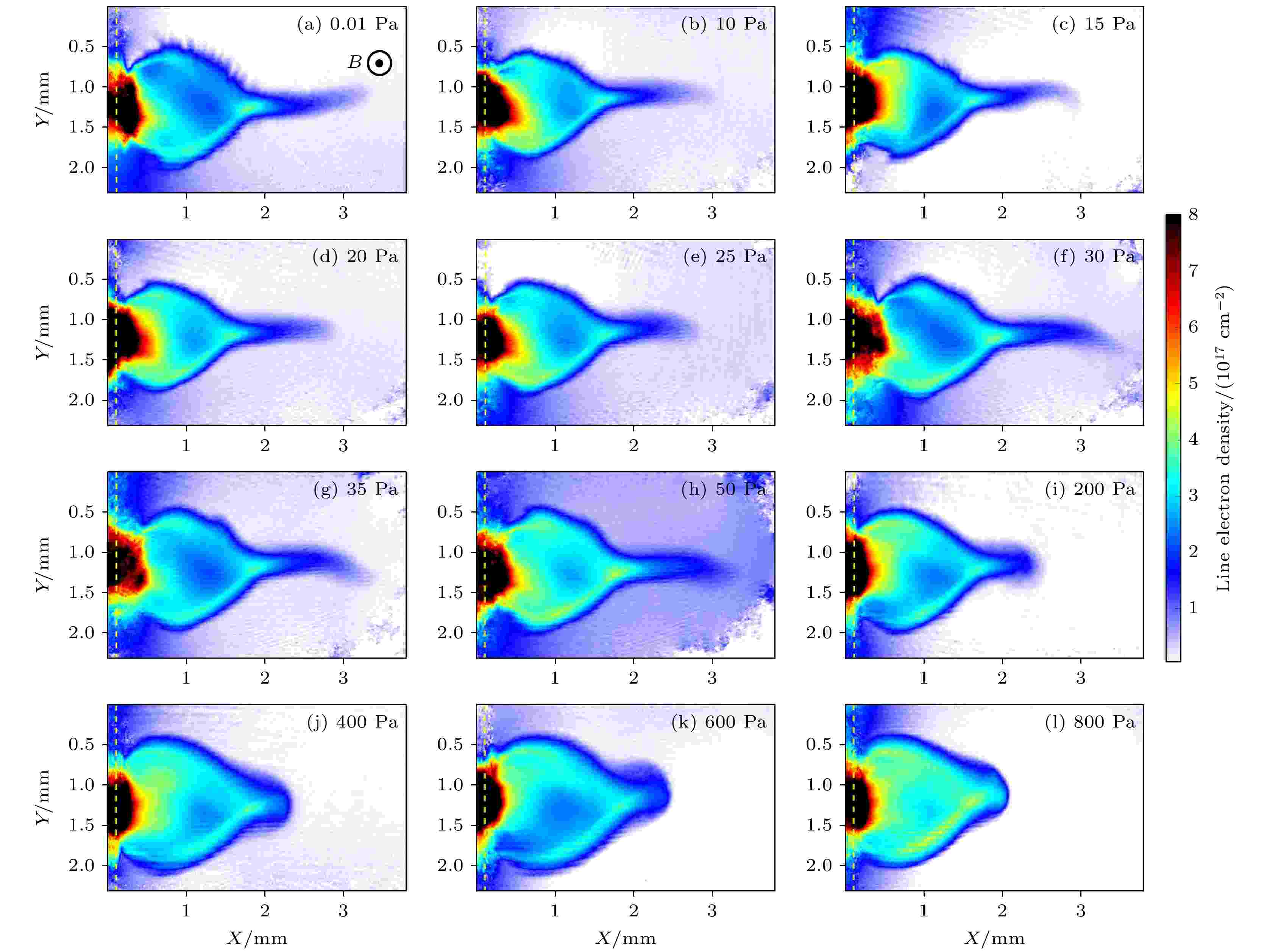
EDITOR'S SUGGESTION
2023, 72 (22): 225201.
doi: 10.7498/aps.72.20231108
Abstract +
Diamagnetic cavity and flute instability generated by plasma expansion in an external magnetic field are important phenomena in space and fusion physics. We use a nanosecond laser irradiated carbon planar target to generate plasma, and the plasma expands in a 7 T transverse pulsed magnetic field to produce diamagnetic cavity. The flute instabilities formed on the surface of the diamagnetic cavity are explored experimentally. Data analysis shows that, under our experimental parameters, the gyroradius of electron ($ {\rho }_{{\rm{e}}} $ ) is much smaller than the density gradient scale length of the diamagnetic cavity ($ {L}_{{\rm{n}}} $ ), while the ion’s gyroradius ($ {\rho }_{{\rm{i}}} $ ) is much larger than $ {L}_{{\rm{n}}} $ , indicating that the electrons are magnetized while the ions are not. The relative drift between electrons and ions provides free energy for developing the flute instability, which is composed of gravity drift and diamagnetic drift. The calculation shows that the gravity drift velocity is much larger than the diamagnetic drift velocity in our experiment, so the instability belongs to the large Larmor radius instability. By filling the target chamber with rarefied helium ambient gas, we find that the flute instabilities are inhibited significantly. When the ambient gas pressure exceeds 50 Pa (about 1% of the interface plasma density of diamagnetic cavity), the flute instabilities are almost completely suppressed. Kinetic analyses show that ion-ion collision and electron-ion collision, especially the former, are the main effects that inhibit the development of instability. Our results are of benefit to laser fusion and address the fundamental question of explored space phenomena.
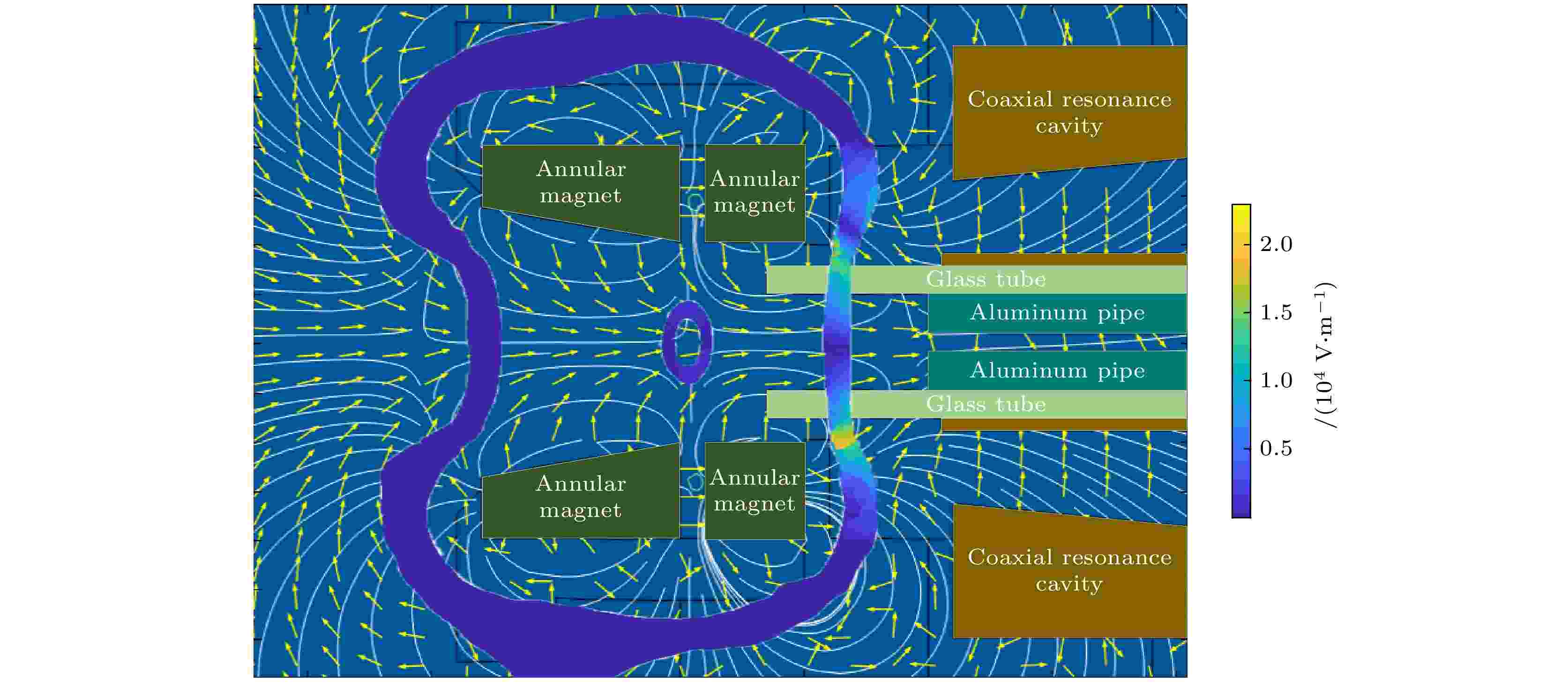
2023, 72 (22): 225202.
doi: 10.7498/aps.72.20230785
Abstract +
With the rapid development of commercial space in recent years, the low-power and low-cost propulsion systems are needed more and more urgently. Compared with conventional chemical propulsion, electric propulsion has a higher specific impulse. Compared with the conventional xenon propellant, iodine propellant that does not require high pressure storage, is cheap and close to the relative atomic mass and ionization energy of xenon. Electron cyclotron resonance source has the advantages of no internal electrode, low pressure ionization, high plasma density and compact structure, which is suitable for low power electric propulsion. Therefore, the study of low power iodine propellant electron cyclotron resonance plasma source is of great significance. In this study, a set of corrosion-resistant feed system with balanced and stable output of iodine vapor is designed. Then the iodine-corrosion-resistant electron cyclotron resonance thruster is designed completely. A corrosion-resistant coaxial cavity structure is used to feed the microwave to the thruster, and the channel magnetic field is changed into a cusped field to generate more electron cyclotron resonance (ECR) layers. Finally, the combined ignition experiment is successfully conducted, showing the first plasma source using electron cyclotron resonance to ionize iodine propellant that can be used for electric propulsion in the world. The analyses of experiments, static magnetic field, microwave electric field distribution show that the unstable plasma plume scintillation at low power and low flow is caused by the conversion between ordinary wave electron plasmon resonance heating mode and extraordinary wave electron cyclotron resonance heating mode. The decrease of ionization rate at a high flow rate is caused by electron loss, wall loss and electronegativity of iodine propellant. Based on this principle, an improvement scheme is proposed. The plasma source has no obvious damage after discharge, which indicates that it has the potential of long life. This work preliminarily proves that the low power electron cyclotron resonance electric propulsion scheme of low power iodine propellant is feasible.
CONDENSED MATTER: STRUCTURAL, MECHANICAL, AND THERMAL PROPERTIES
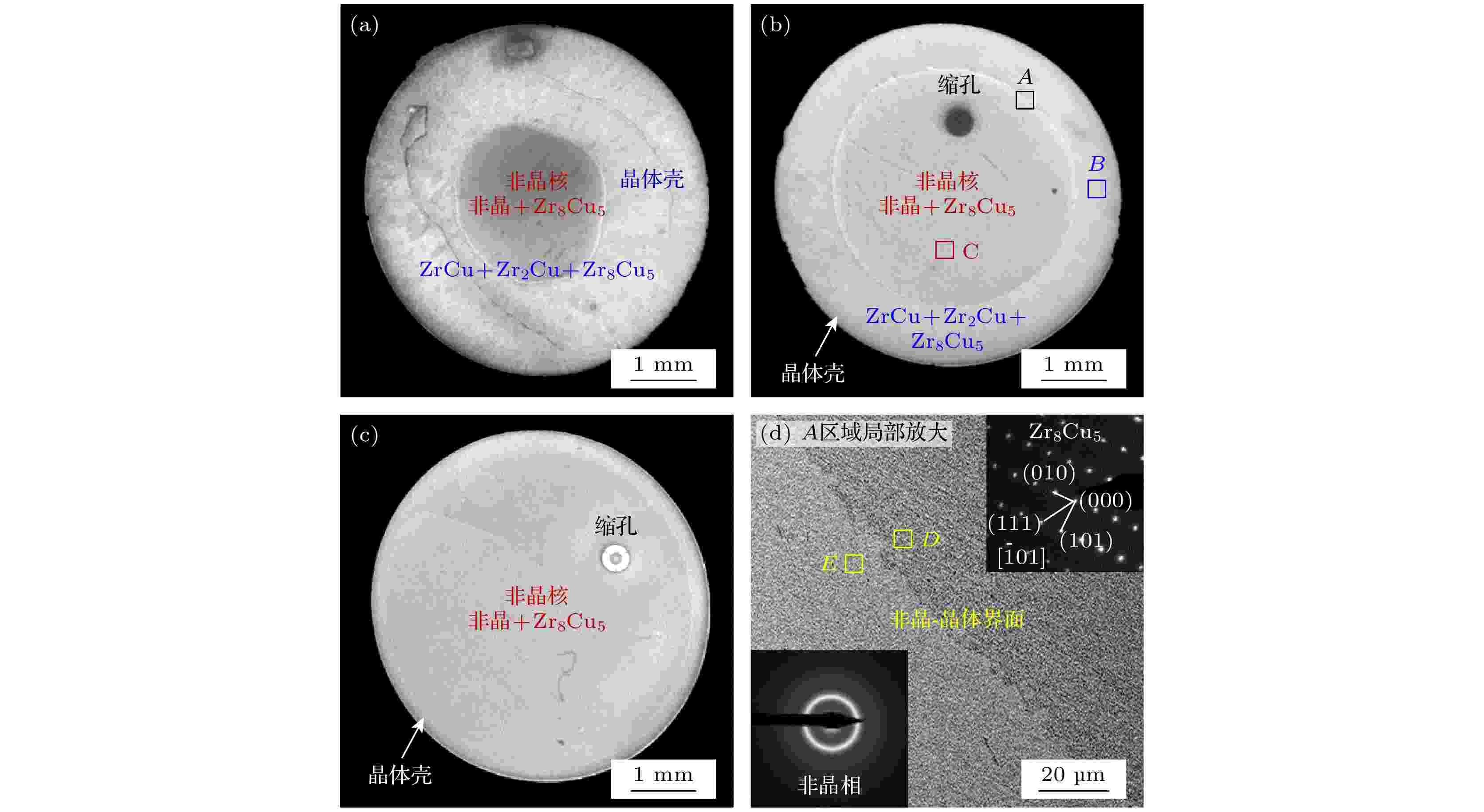
2023, 72 (22): 226401.
doi: 10.7498/aps.72.20231169
Abstract +
The substantial undercooling and rapid solidification of liquid quinary Zr57Cu20Al10Ni8Ti5 alloy are achieved by electromagnetic levitation (EML) technique. The amorphous solidification mechanism is revealed with molecular dynamics (MD) simulation. It is observed in EML experiment that the containerlessly solidified alloy is characterized by a core-shell structure, with mainly amorphous phase becoming the core and crystalline ZrCu, Zr2Cu and Zr8Cu5 phases forming the shell. The volume fraction of amorphous core structure increases with undercooling and attains a value up to 81.3% at the maximum experimental undercooling of 300 K, which indicates that the critical undercooling required for complete amorphous solidification is 334 K. TEM analyses show that the alloy microstructure is mainly composed of Zr8Cu5 phase, whereas the ZrCu phase and Zr2Cu phase are suppressed when liquid undercooling approaches this threshold. Once the critical undercooling is reached, amorphous solidification prevails over the crystallization of Zr8Cu5 phase. In addition, a small quantity of amorphous phases are found in the crystalline shell and a little trace of Zr8Cu5 nano-cluster is detected among the amorphous core. It is further verified by MD simulation that the formation of amorphous phase in the shell is caused by the microsegregation-induced solutal undercooling when liquid alloy attains the critical undercooling, while the nano-clusters within the core is mainly ascribed to the micro-thermal fluctuation effect inside highly undercooled liquid phase.
CONDENSED MATTER: ELECTRONIC STRUCTURE, ELECTRICAL, MAGNETIC, AND OPTICAL PROPERTIES

2023, 72 (22): 227201.
doi: 10.7498/aps.72.20230935
Abstract +
Based on the single electron effective mass approximation theory and the transfer-matrix method, the spin polarized transport properties of electrons in a diluted-magnetic-semiconductor/semiconductor superlattice are studied. The influence of a light-field and a magnetic-field on spin polarized transport and the tunneling time in the superlattice structure are discussed in more detail. The results show that, due to the sp-d electron interaction between conduction band electrons and doped Mn ions, giant Zeeman splitting occurs. It is shown that a significant spin-dependent transmission and the position and width of the resonant-transmission-band of spin-dependent electron can be manipulated by adjusting the magnetic- and light-field. Considering the light field irradiation, the resonance band of electron is deformed and broadened with the increase of the light field intensity. For the case of a strong magnetic field, the transmission coefficient (TC) in the low-energy region is almost zero when the light field is not added, but with the increase of light intensity, the TC increased significantly in the zone increases significantly, that is, a quasi-bound band appears. These features are due to the energy exchange between electrons and the light field when electrons tunnel through the superlattice structure under light irradiation. In addition, light and magnetic fields can significantly change the spin polarization of electrons. Under a certain magnetic field intensity (B = 2 T), the light field significantly changes the spin polarization of electrons, the main effect is that the width of the spin polarization platform narrows and oscillatory peaks are accompanied on both sides of the platform. This effect is strengthened with the increase of the light field intensity. However, when the magnetic field is stronger (B = 5 T), the opposite is true. These show that the spin polarization can be modulated by the light field. Finally, the tunneling time of spin-up and spin-down electrons is studied by the evolution of Gaussian wave packets in the structure. The results show that the tunneling time depends on a spin of electrons, and it can be seen that the tunneling time of the spin-down electron is shorter than that of the spin-up electron in the superlattice structure. These remarkable properties of spin polarized transport may be beneficial for the devising tunable spin filtering devices based on diluted magnetic semiconductor/semiconductor superlattice structure.
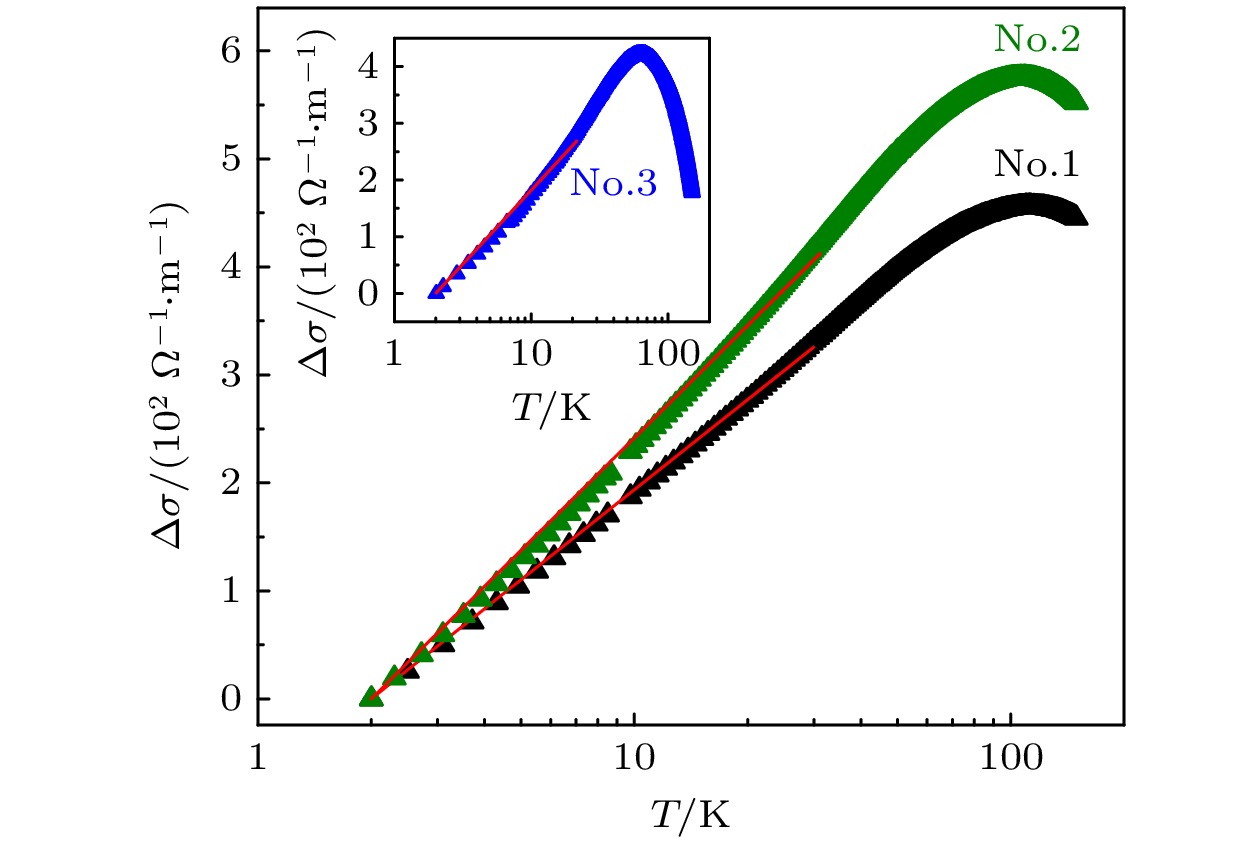
EDITOR'S SUGGESTION
2023, 72 (22): 227301.
doi: 10.7498/aps.72.20231082
Abstract +
A series of Ba0.94La0.06SnO3 thin films are deposited on MgO(001) single crystal substrates by RF magnetron sputtering method, and their structure and electrical transport properties are systematically investigated. All films reveal degenerate semiconductor (metal) characteristics in electrical transport properties. In the high-temperature region ($T > {T_{\min }}$ , where ${T_{\min }}$ is the temperature at which the resistivity reaches a minimum value), the resistivity of each film increases with temperature, and exhibits a linear relationship with the square of the temperature. In the low-temperature region ($T < {T_{\min }}$ ), the resistivity increases with decreasing temperature and varies linearly with $ \ln T $ . This temperature dependent behavior of resistivity cannot be explained by the general electron-electron interaction or weak localization effects in homogeneous disordered conductors and nor by Kondo effect. After quantitative analysis, it is found that the $ \ln T $ behavior of resistivity at low temperatures can be explained by the electron-electron Coulomb interaction effect in the presence of granularity. In addition, it is found that the Hall coefficient $ {R_{\text{H}}} $ also varies linearly with $ \ln T $ for the Ba0.94La0.06SnO3 film, which also quantitatively accords with the theoretical prediction of the electron-electron Coulomb interaction effects in the granular metals. The results of cross-section high-resolution transmission electron microscope indicate that although the films have epitaxial structures as a whole, there are many strip-shaped amorphous regions in films, which makes the films have electrical transport properties similar to those of metal granular films. Our results provide strong support for the validity of the theory concerning the effects of Coulomb interaction on the conductivity and Hall coefficient in granular metals.
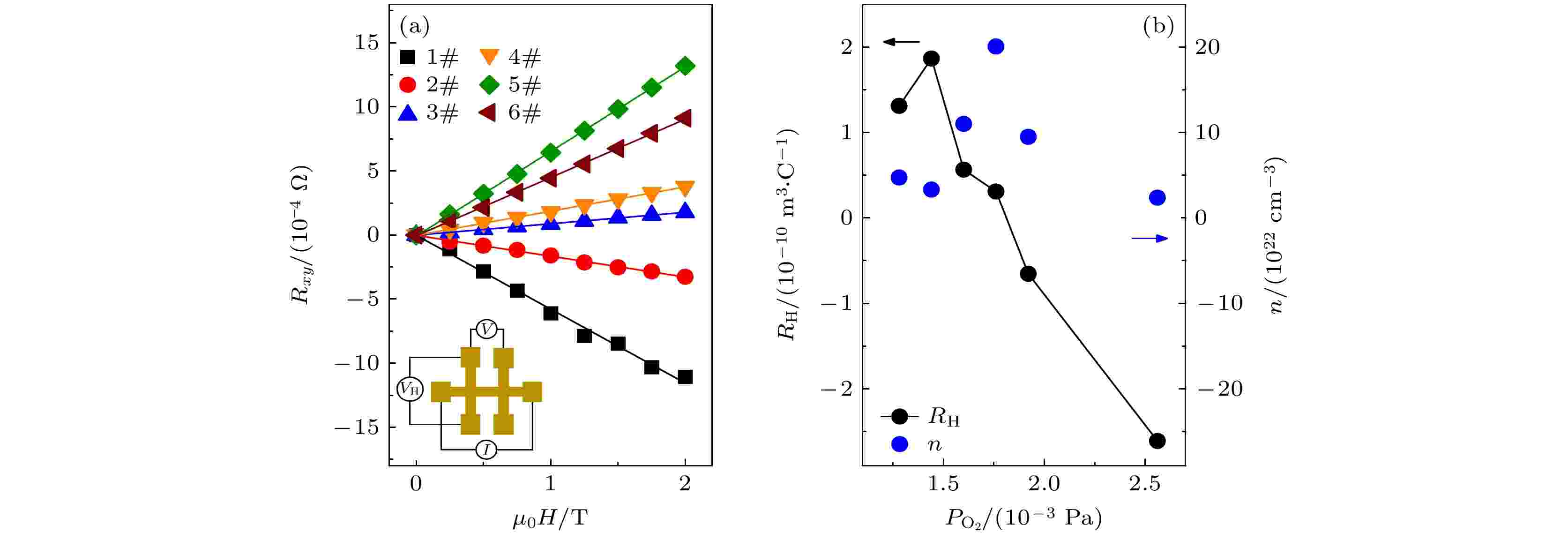
2023, 72 (22): 227302.
doi: 10.7498/aps.72.20231083
Abstract +
Titanium monoxide has attracted great attention due to its unique superconducting characteristics and potential applications in microelectronics. In this work, a series of TiO thin films are prepared at room temperature by using the radio frequency magnetron sputtering method through changing the oxygen partial pressures. The crystal structures, valences of the elements, and electrical transport properties of the films are investigated systematically. X-ray diffraction results indicate that the films are epitaxially grown on MgO single crystal substrates along the [001] direction. After the surface of the TiO film is treated by ion etching, it is found that the Ti element mainly exists in a divalent form. For all films, the temperature coefficients of resistance are negative above superconducting transition temperature Tc. The films prepared under high oxygen partial pressures reveal insulator characteristics, and the temperature dependence of resistivity obeys the Mott-type variable-range-hopping law in low temperature regime. The films prepared under low oxygen partial pressures exhibit metallic properties, and enter into a superconducting state at low temperature. The superconducting transition temperature Tc in our film can be as high as 3.05 K. The carrier concentrations of the films are in the vicinity of ~2.0×1022 cm–3, which is comparable to those for the typical metals. Interestingly, it is found that the main species of the charge carriers in the films transforms from electrons to holes with the oxygen partial pressure decreasing. The crossover of the species of the charge carriers could related to the changing of energy-band structure with the oxygen content in TiO film.
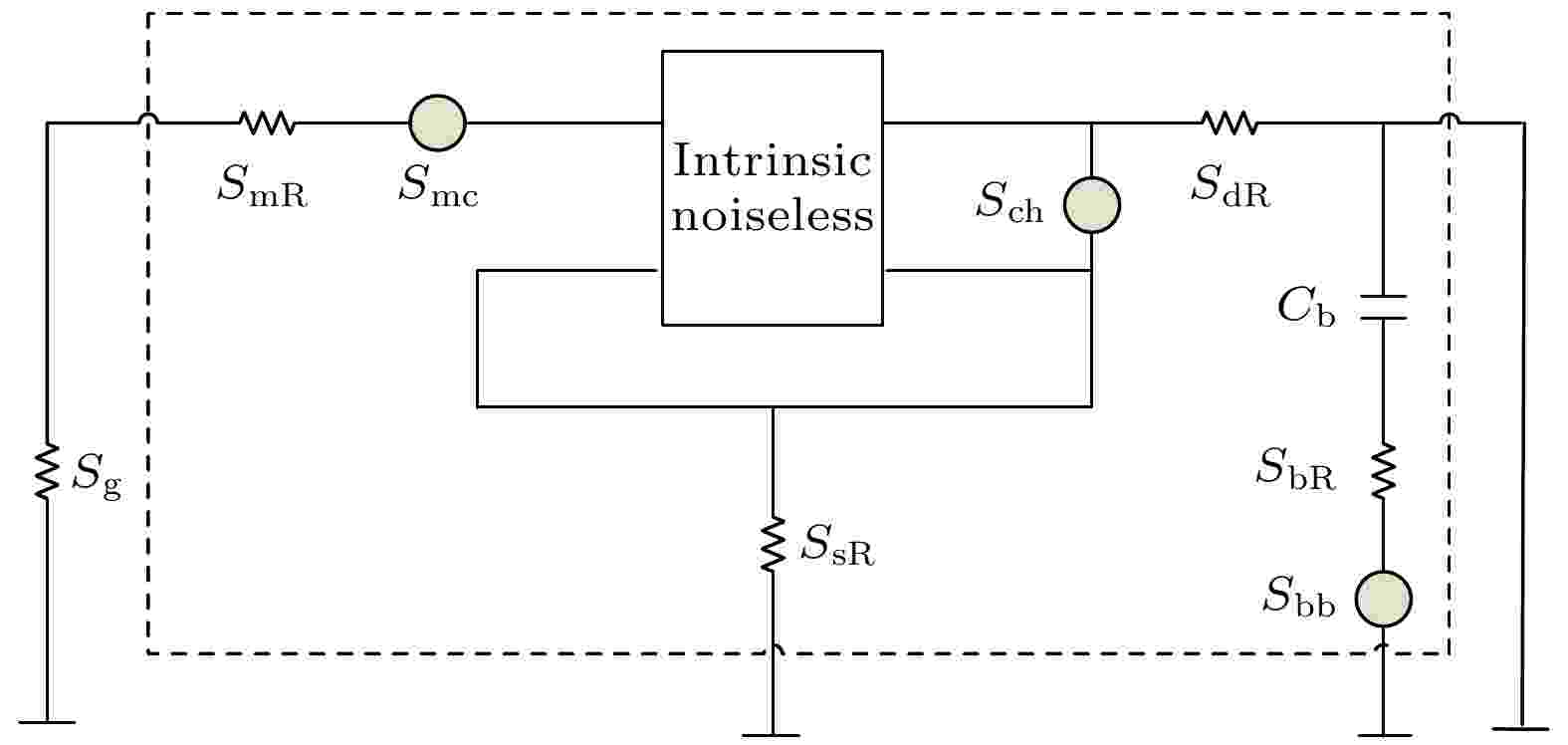
Analysis of thermal noise characteristics in 10 nm metal oxide semiconductor field effect transistor
2023, 72 (22): 227303.
doi: 10.7498/aps.72.20230661
Abstract +

2023, 72 (22): 227401.
doi: 10.7498/aps.72.20231105
Abstract +
As a commonly used food additive, synthetic dyes are widely used in foods such as beverages, sweets and dairy products, and in the food processing process. Excessive use of synthetic dyes may induce cell mutations, children’s hyperactivity, genetic diseases and even cancer, which greatly threatens human health. As a fast, cheap, stable, ultra-sensitive and accurate detection method, SERS detection can reflect rich information about molecular fingerprint through the vibration of the analyte, and accurately determine the trace quantity of synthetic dyes in the actual environment. The metal/semiconductor heterostructure formed by the combination of plasmon metal and semiconductor is advantageous for the enhancement of photoinduced charge transfer (PICT) efficiency, and has obvious advantages in the study of surface-enhanced Raman scattering. In this work, the prepared hybrid substrate is annealed to further improve the surface-enhanced Raman scattering activity. Initially, high-density and monodisperse silver/silver oxide (Ag/Ag2O) nanoparticles are loaded onto two-dimensional hexagonal boron nitride (h-BN) nanosheets. On this basis, by annealing the system at high temperature, an efficient charge transfer channel is constructed, which greatly improves the PICT efficiency and chemical enhancement (CM). It is confirmed experimentally that the SERS signal intensity of h-BN/Ag/Ag2O material annealed at 320 ℃ with crystal violet (CV) as probe molecule is significantly increased 18 times compared with that of unannealed material, enhancement factor (EF) reaches 16.3145 ×107. Finally, based on the excellent SERS property of h-BN/Ag/Ag2O annealed at 320 ℃, the SERS detection of food additive Patent Blue V (PBV) is conducted in this work. The results show that the lowest detection concentration can reach 10–12 M, and the trace detection of synthetic dye PBV is realized. It has excellent spatial uniformity and anti-interference capability, which is of great significance in implementing the actual scene detection of PBV. The h-BN/Ag/Ag2O annealed at 320 ℃, the composite which is constructed in this paper, has both physical enhancement and chemical enhancement, and possess significant advantages in ultra-low sensitive SERS detection of food additives.
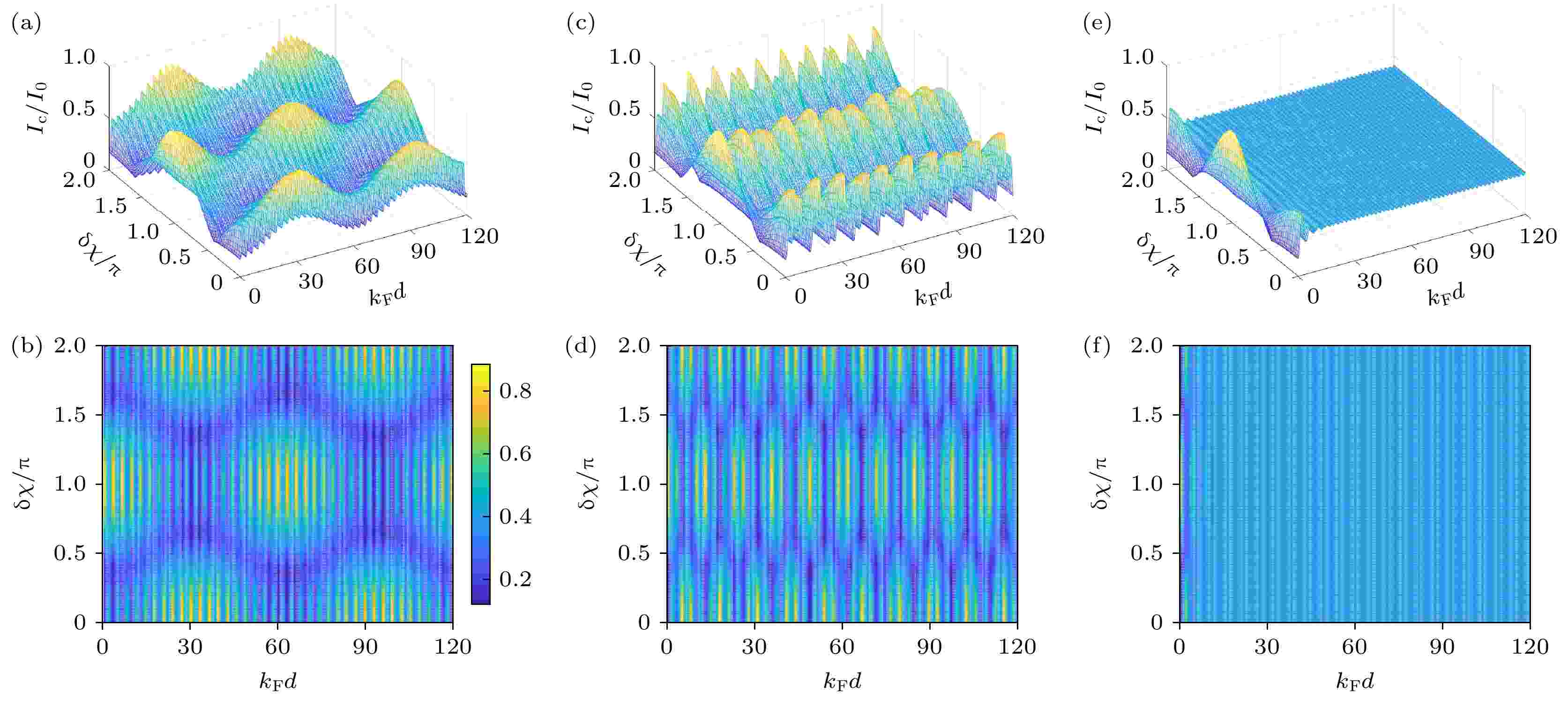
EDITOR'S SUGGESTION
2023, 72 (22): 227402.
doi: 10.7498/aps.72.20231008
Abstract +
Based on the Bogoliubov-de Gennes equations, we investigate the transport of the Josephson current in a one-dimensional S/FL-F-FR/S junction, where S and F are superconductor and ferromagnet, and FL,R are the left and right interfaces with noncollinear magnetizations. It is found that the FL and FR interfaces can induce spin-mixing and spin-flip effects, which can transform a part of spin-singlet pairs in the S into equal-spin triplet pairs in the F. For the short S/FL-F-FR/S junction, the spin-singlet pairs and the equal-spin triplet pairs can survive in the F layer. Therefore, with the increase of the ferromagnetic exchange field and the angle difference of interface magnetization rotation, the critical current oscillates on a base level. If the F is transformed into half-metal, only the equal-spin triple pairs exist in the F layer, and the oscillation characteristic of critical current disappears. In addition, the FL and FR interfaces can work as conventional potential barriers. As a result, the critical current exhibits double oscillation behaviors with the increase of ferromagnetic thickness, in which the long-wave oscillation arises from the phase change of the spin-singlet pairs in the ferromagnetic layer, and the short-wave oscillation is caused by the resonant tunneling effect when the spin-singlet pairs and the equal-spin triplet pairs pass through two interfacial barriers.
INTERDISCIPLINARY PHYSICS AND RELATED AREAS OF SCIENCE AND TECHNOLOGY

2023, 72 (22): 228401.
doi: 10.7498/aps.72.20231259
Abstract +
Currently, the measurement and prediction of the electrical transport performance of thermoelectric double-layer membrane is often based on the theory of parallel model. However, the conditions under which the parallel model can be used lack theoretical and experimental support and validation. In this work, the Seebeck coefficients of Cu/Si and Ag/Si bilayers under applied temperature difference are obtained by using finite element theory simulations with the help of COMSOL Multiphysics software and compared with the results from the parallel model. Whether the ends of the bilayer plated with a metal Pt layer, and the insertion of a high-resistance/low-resistance/insulation interface between the bilayers affect the Seebeck coefficient measurements of the bilayer are investigated. It is found that when there is no Pt at the hot end or cold end, the potentials on the Si side and Cu side at the high-resistance and electrically insulating interfaces are uniformly distributed along the direction of the temperature gradient, respectively, and the measured Seebeck coefficients are the same as the values of the materials’ own, respectively, and the thermal potential on the Cu side at the low-resistance interface varies uniformly with the probe spacing L, while the thermal potential on the Si side shows a non-uniform variation. With Pt, the thermal potentials on the Cu side and Si side are uniformly distributed along the direction of the temperature gradient, and the measured values on both Si side and Cu side are the same as the Cu Seebeck coefficients, regardless of the insulating/high-resistance/low-resistance interface. The Si/Ag and Bi/Ag bilayers are investigated experimentally. In the absence of Pt, the absolute value of the Seebeck coefficient on the Si side of Si/Ag bilayer decreases with temperature decreasing, but the absolute value of the Seebeck coefficient on the Ag side increases with temperature decreasing. In the presence of Pt, the Seebeck coefficients on both sides of the Bi/Ag bilayer membrane are equal.








